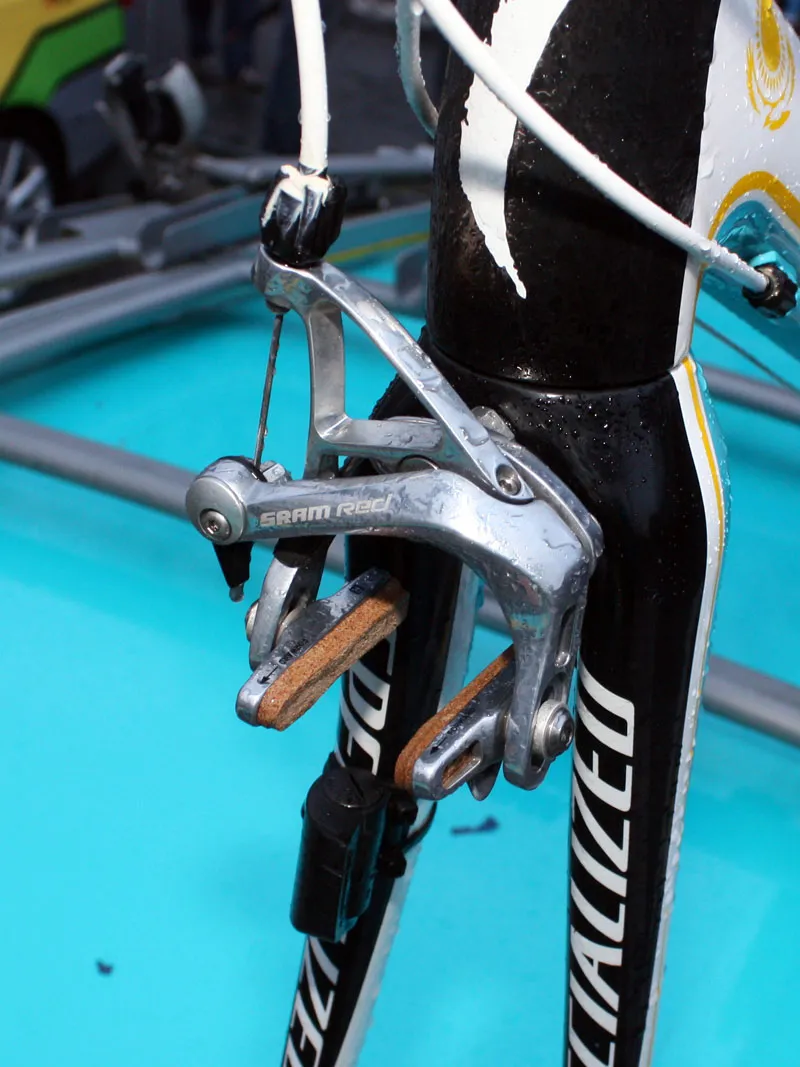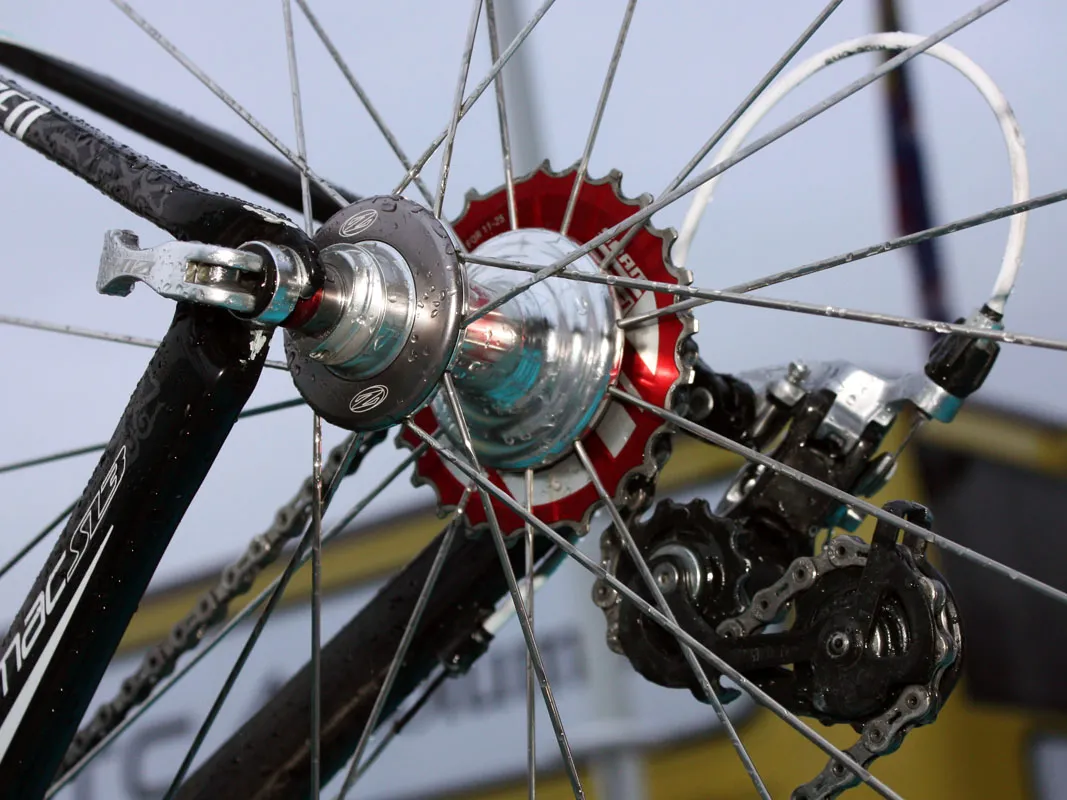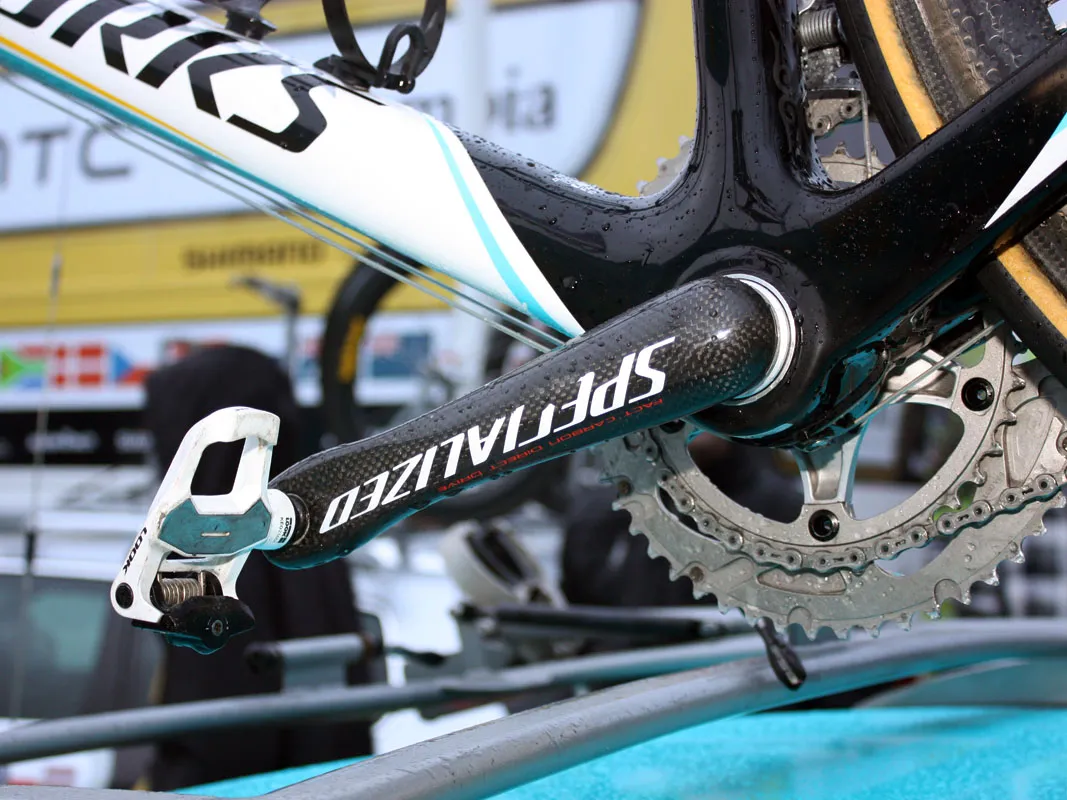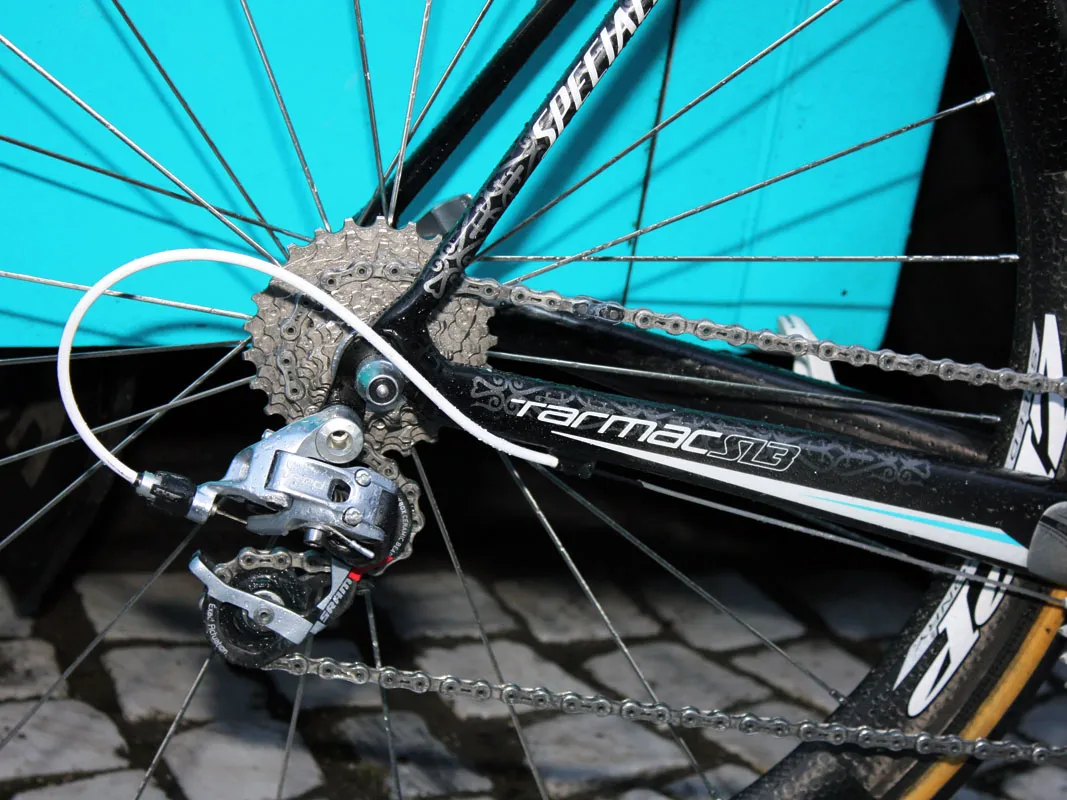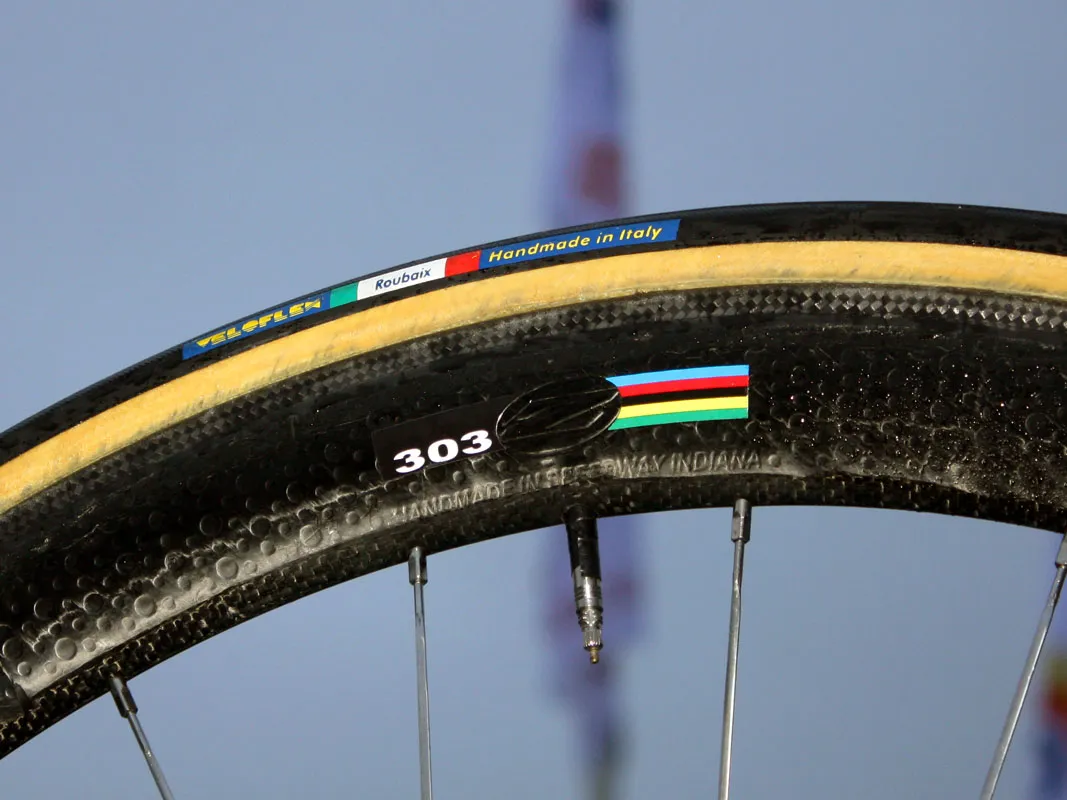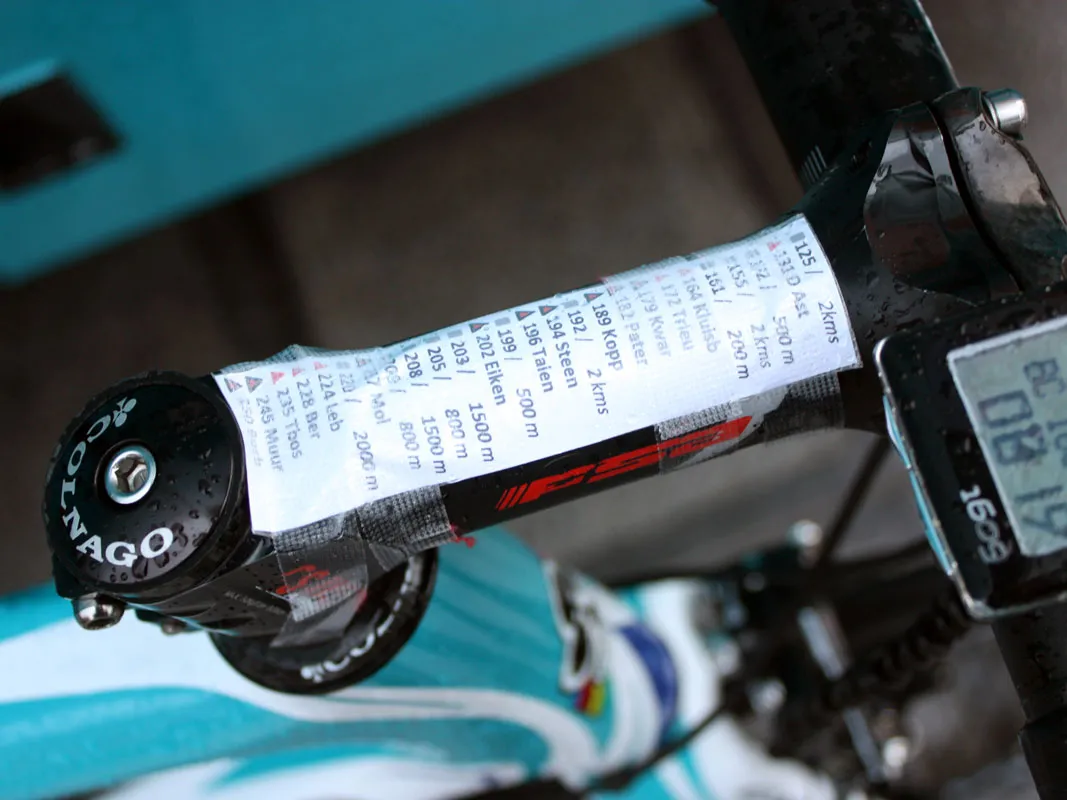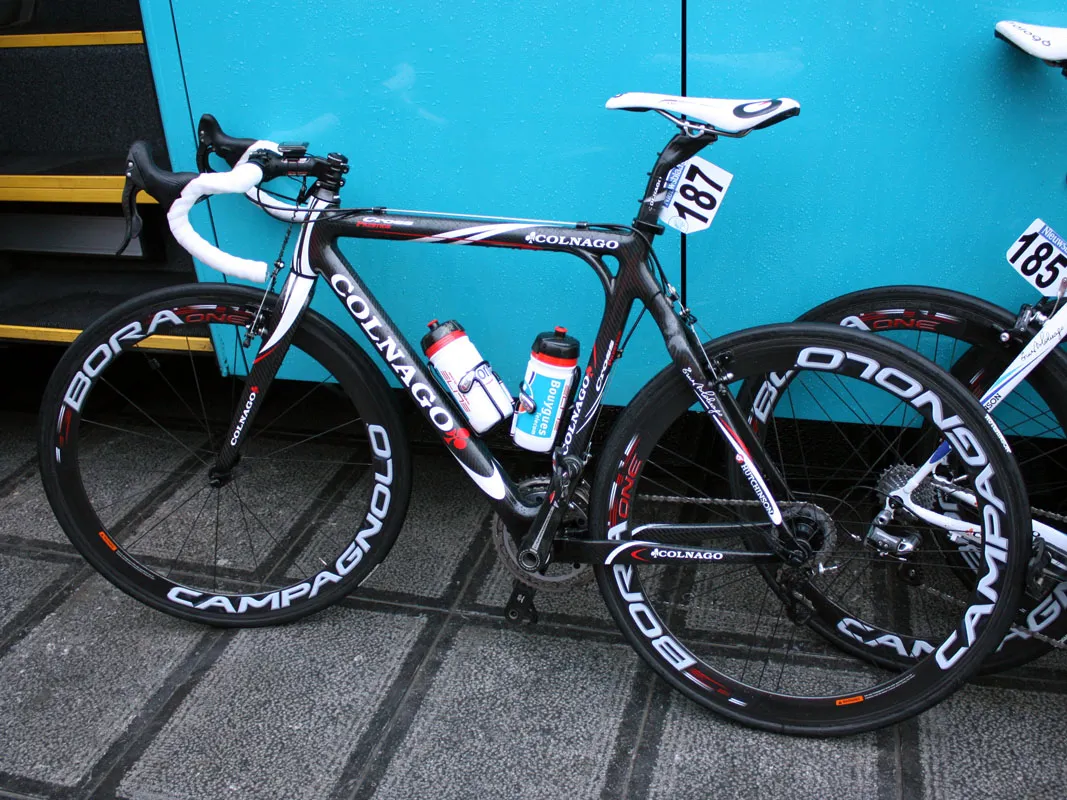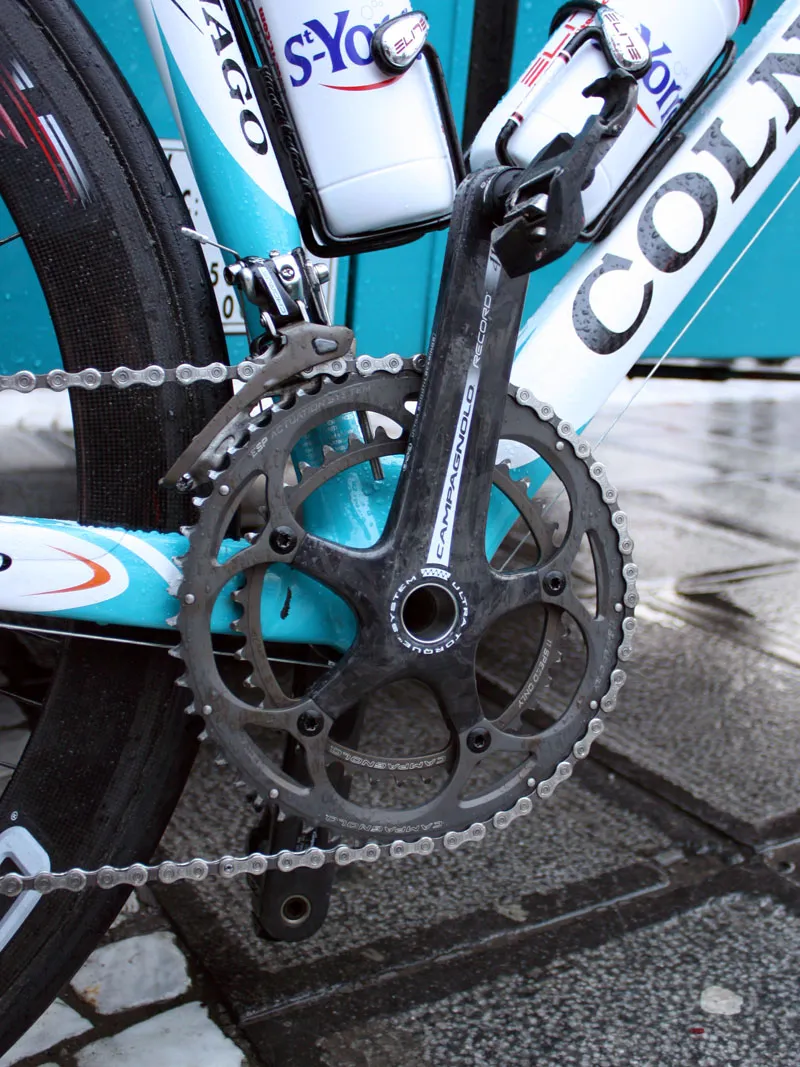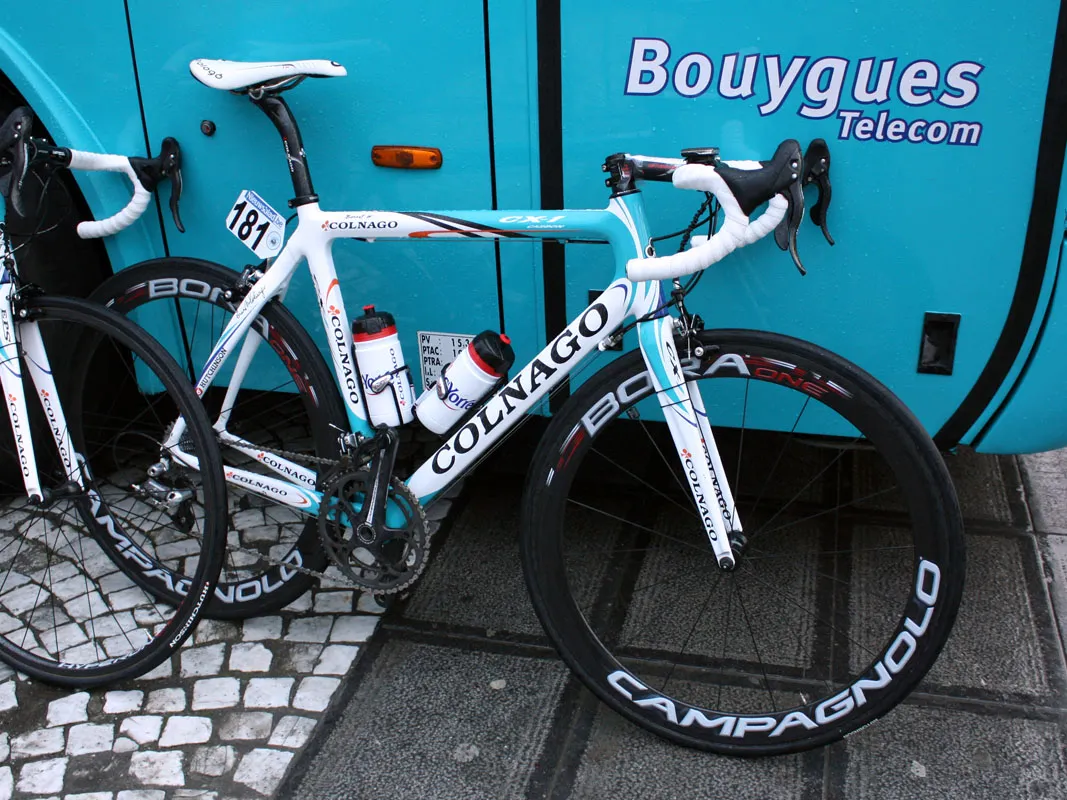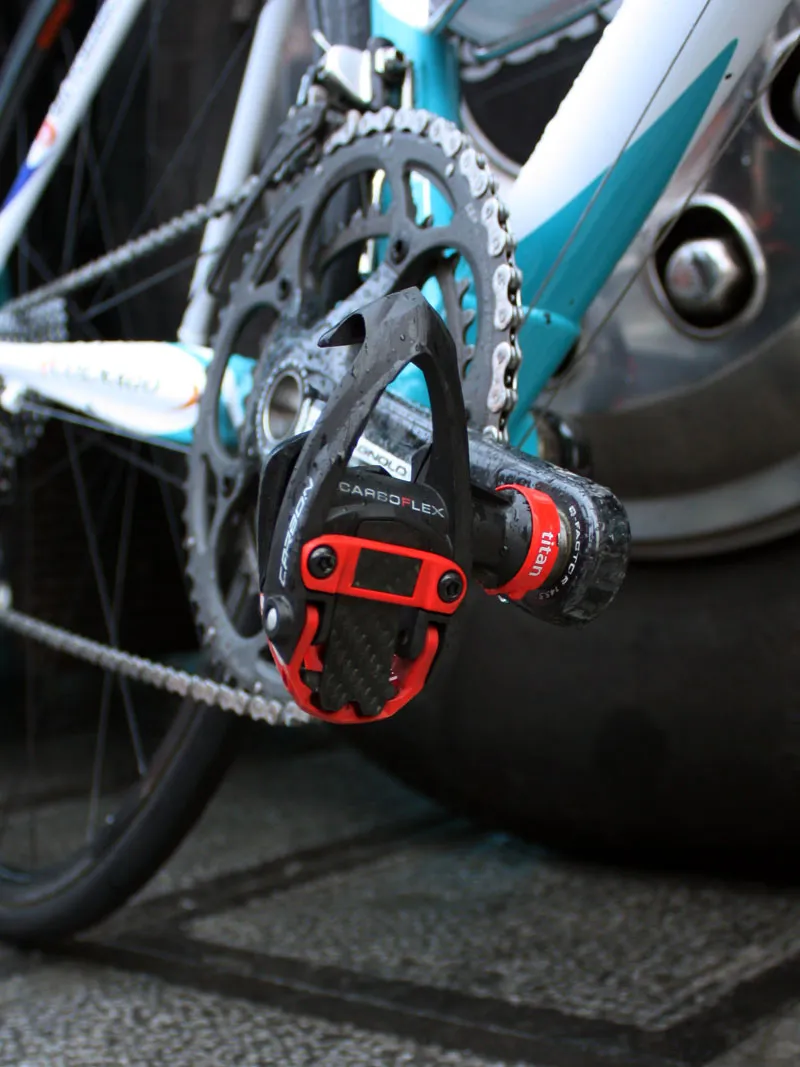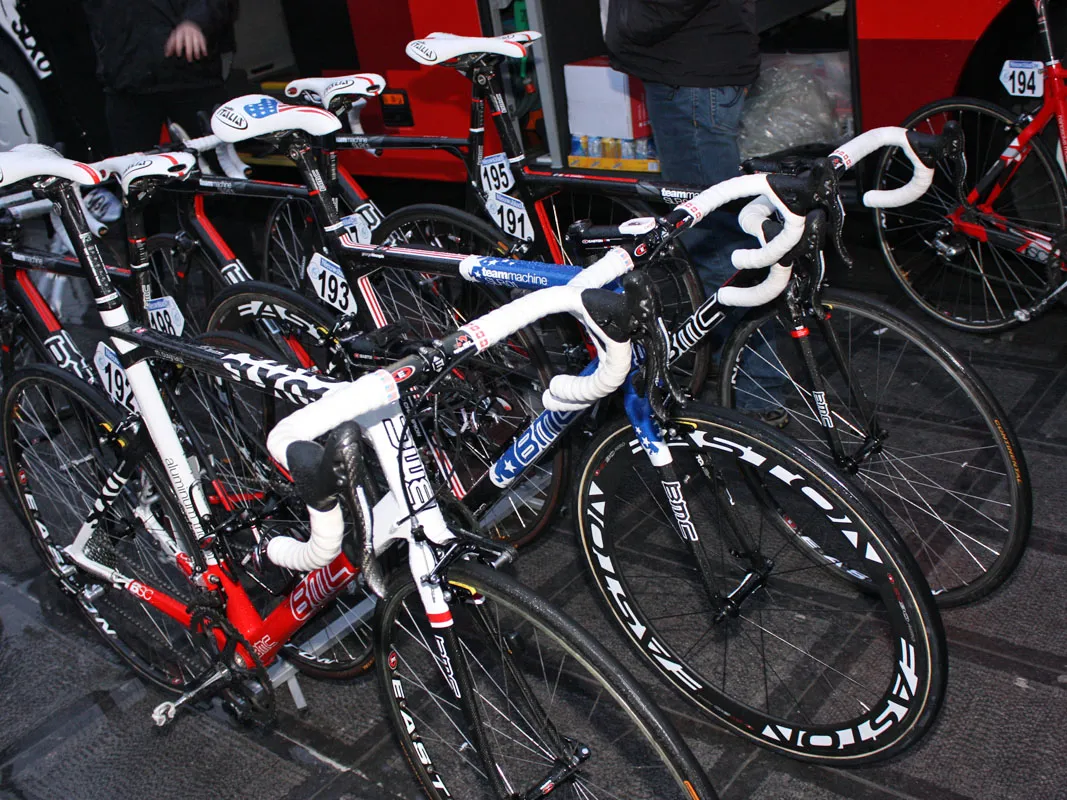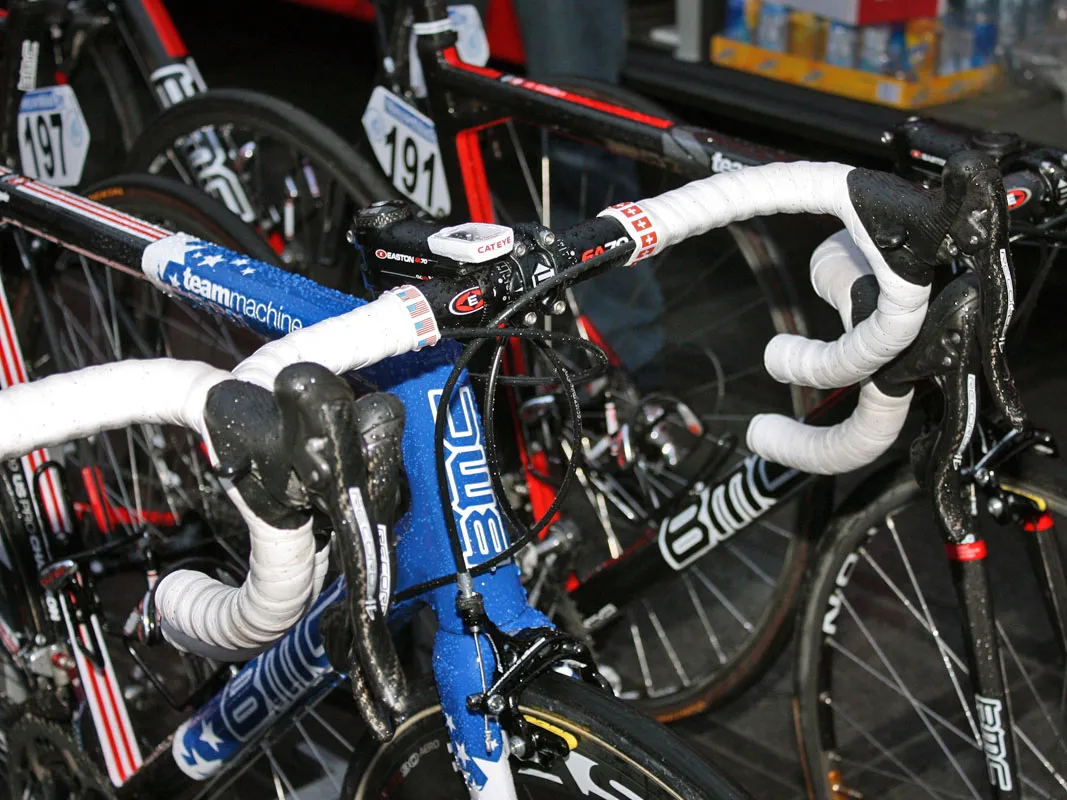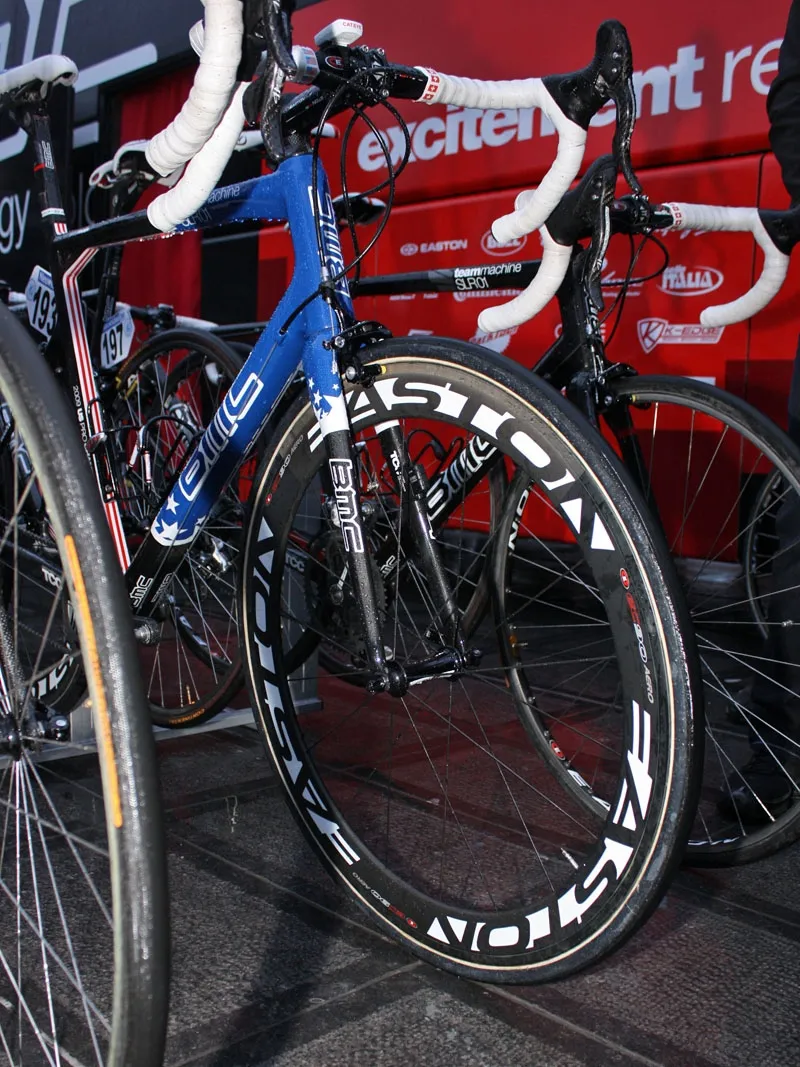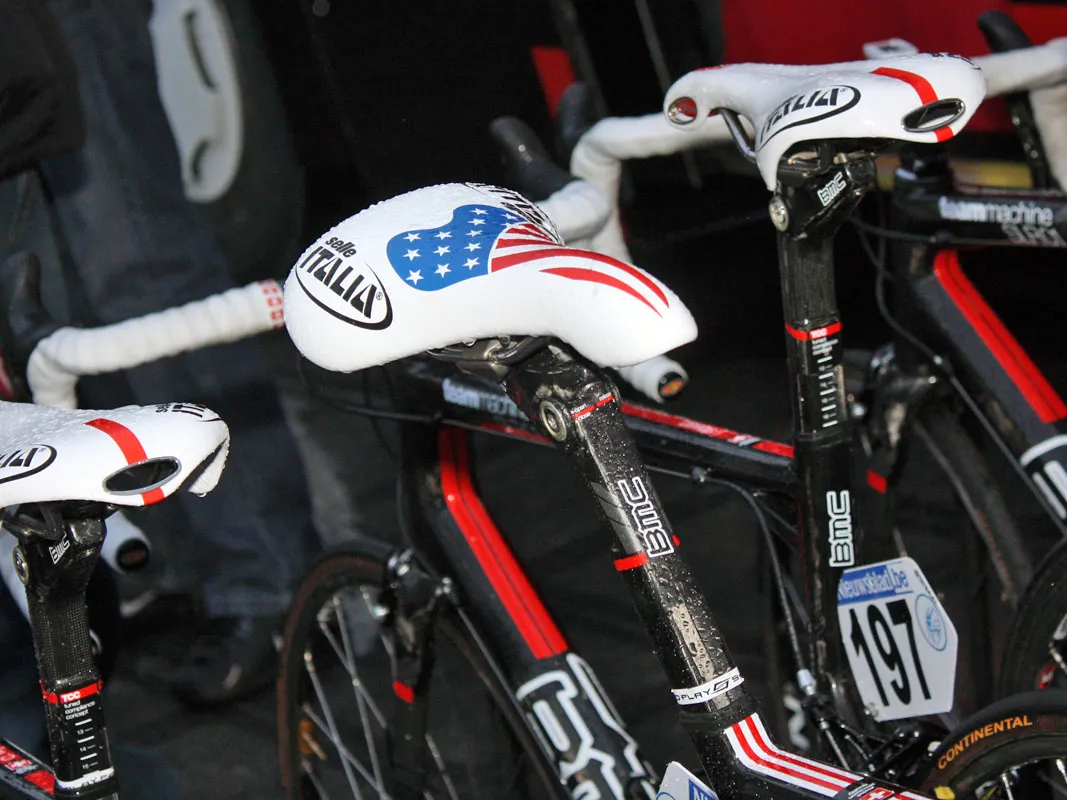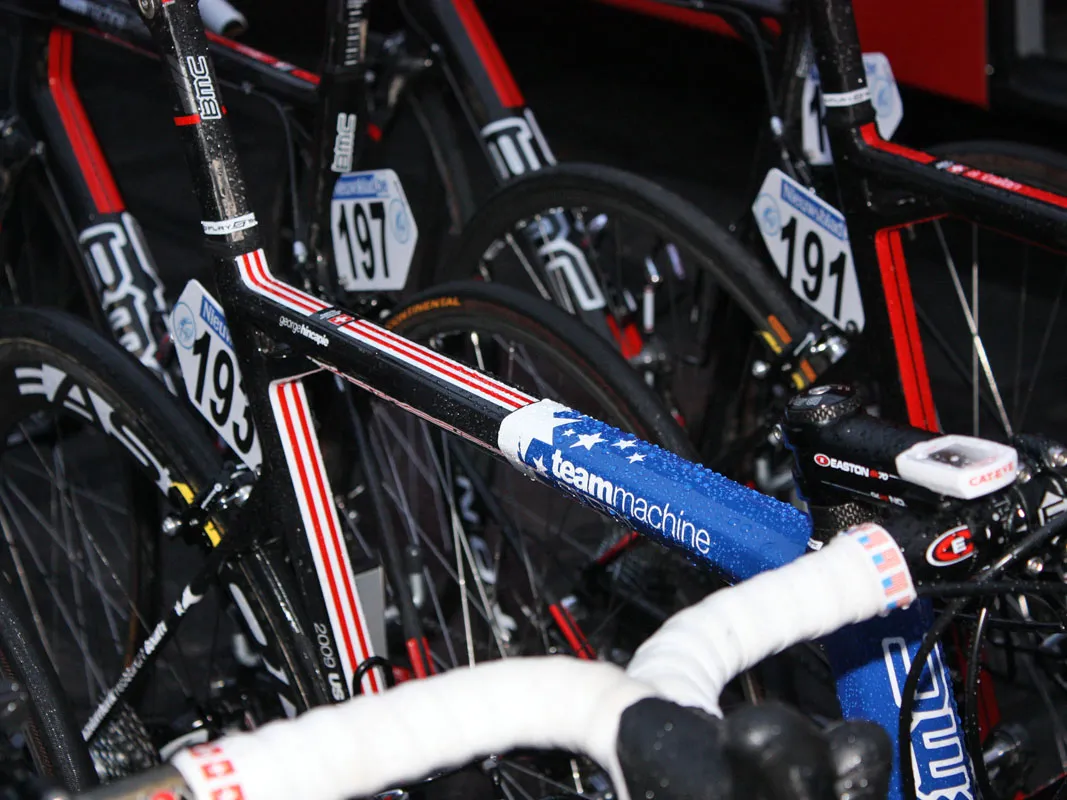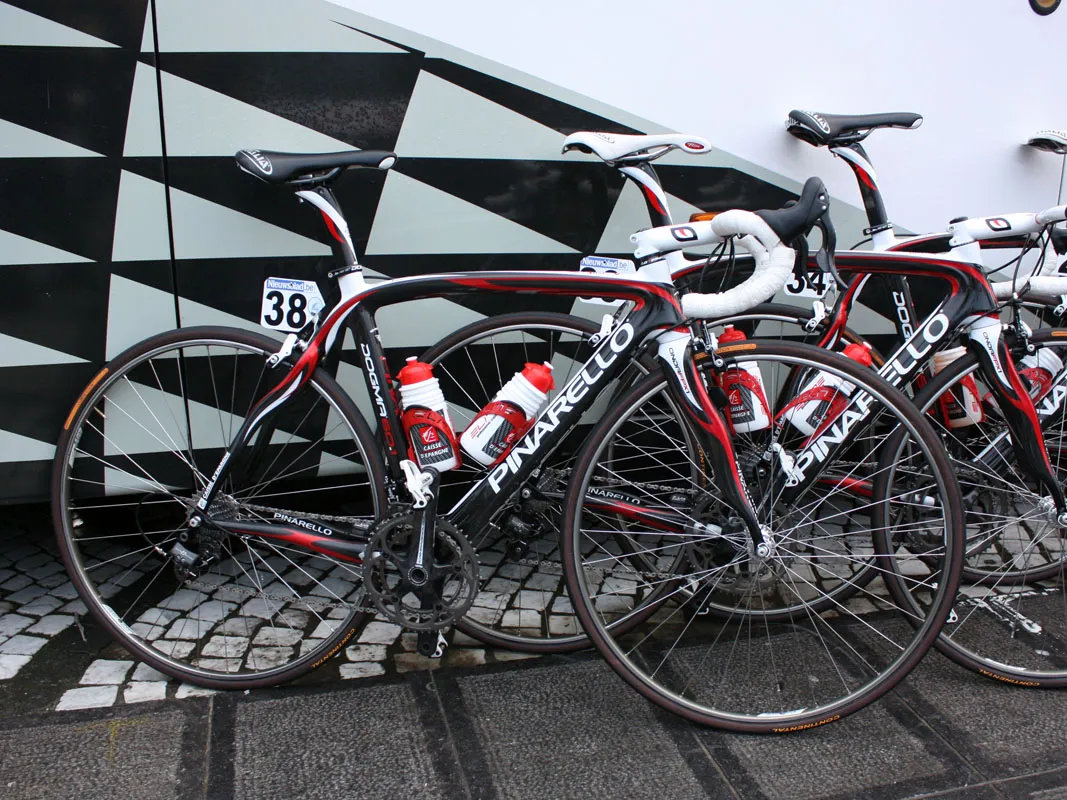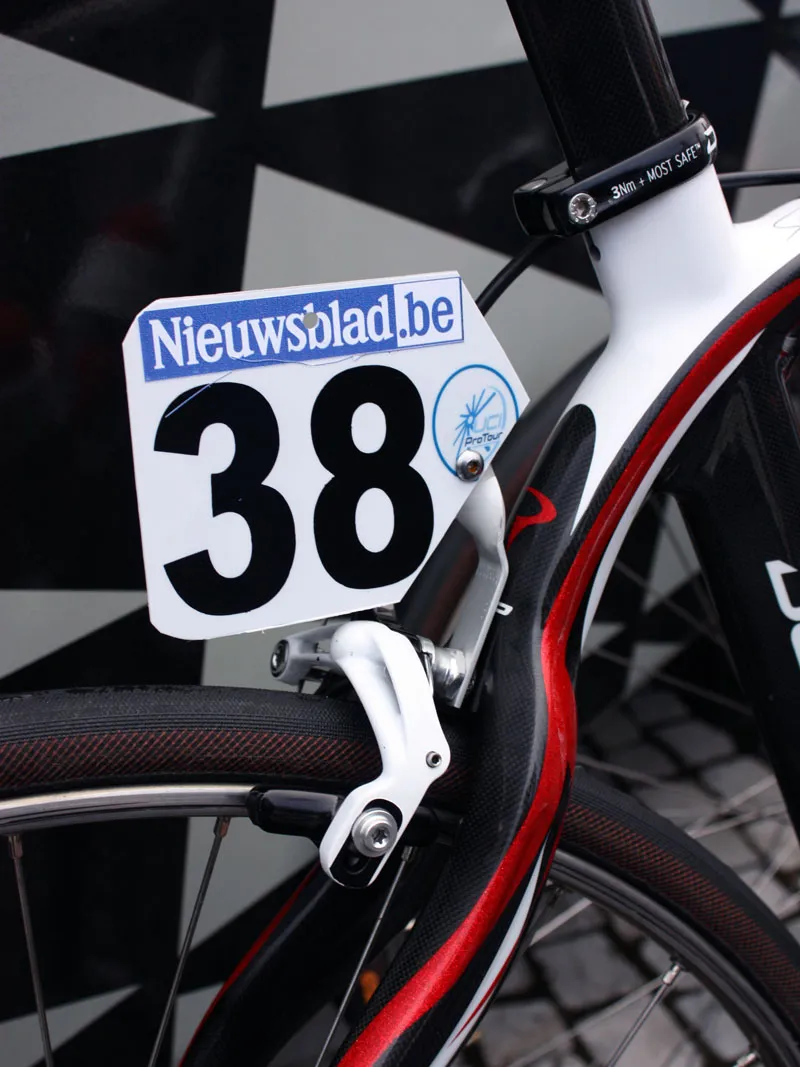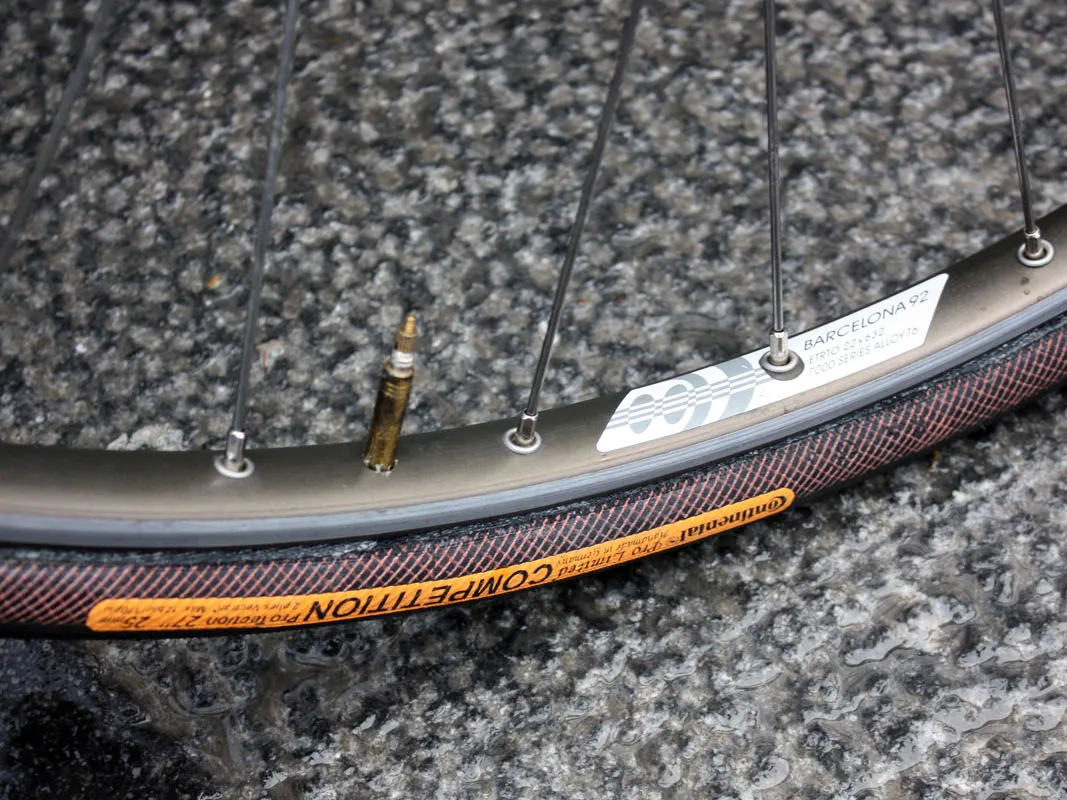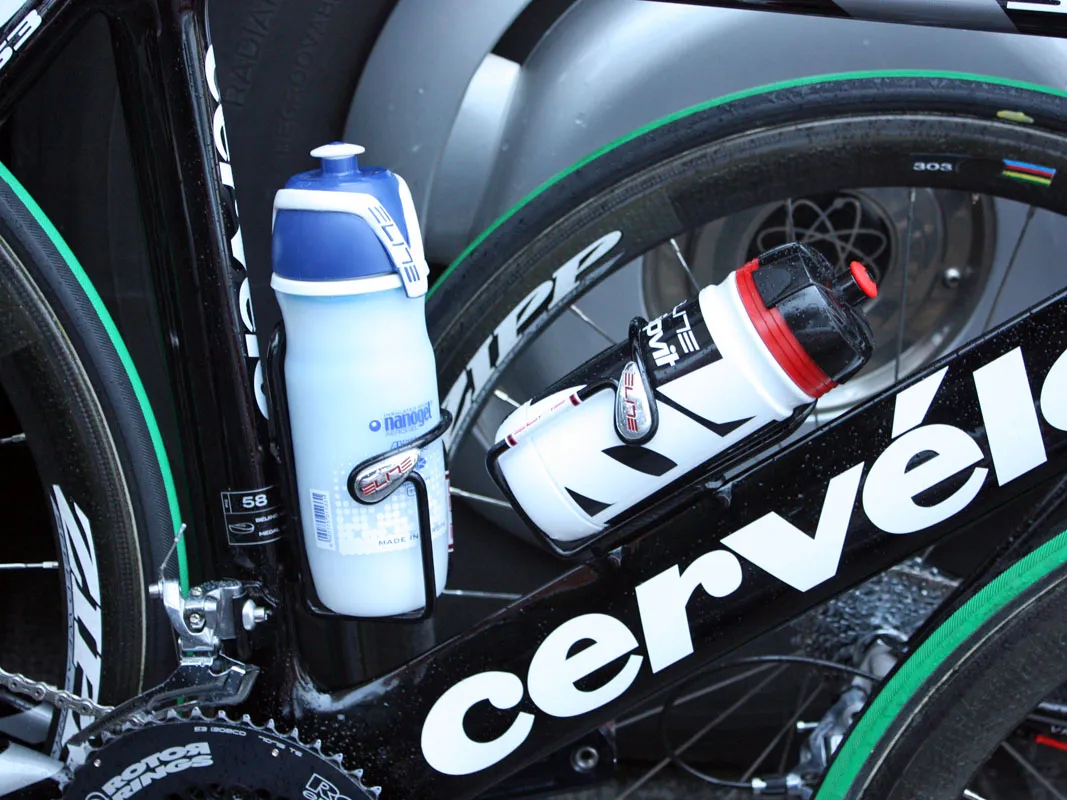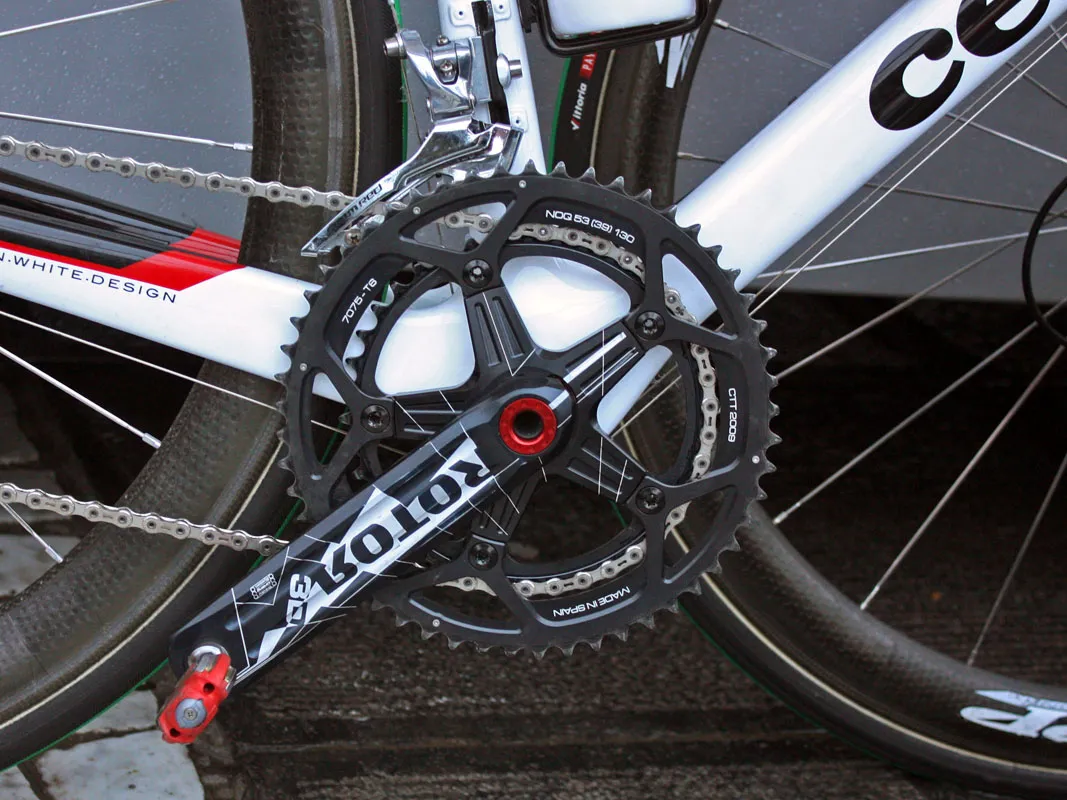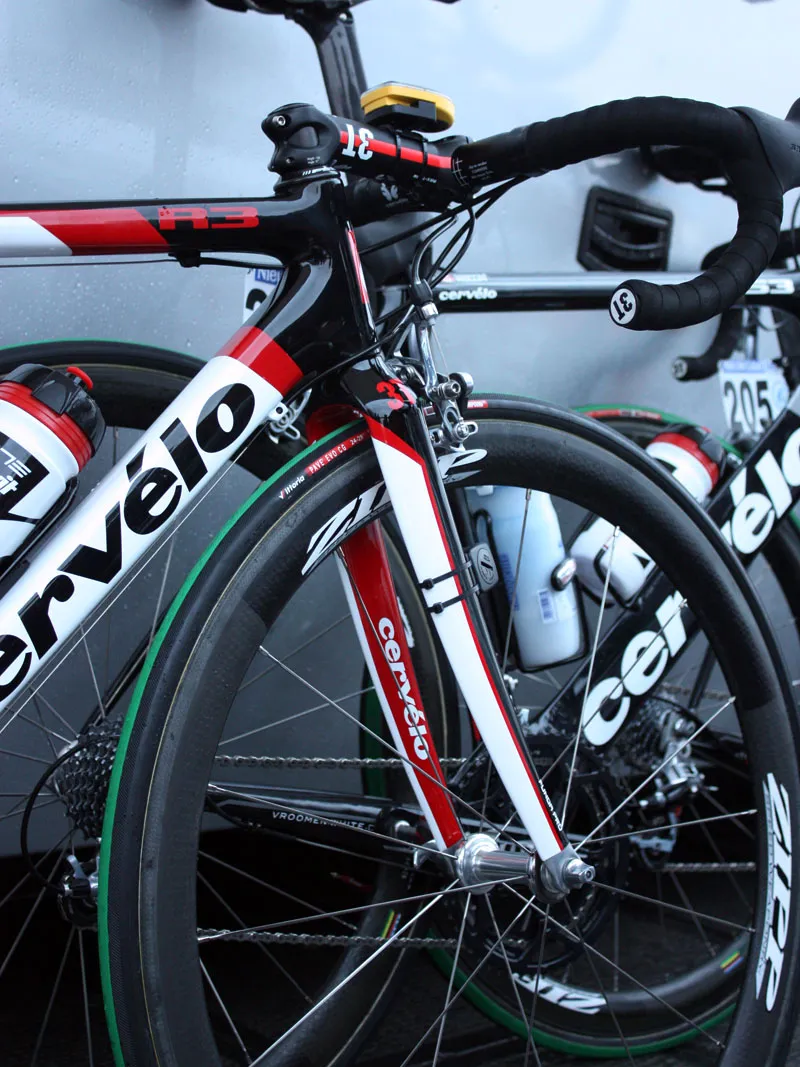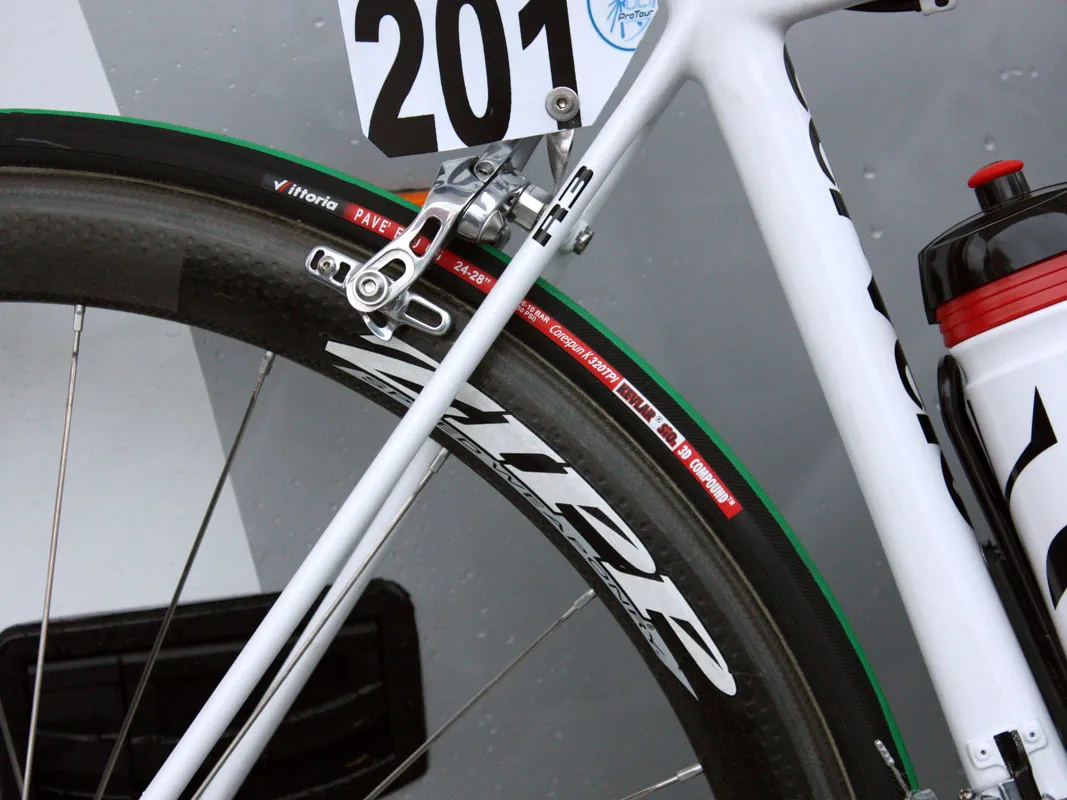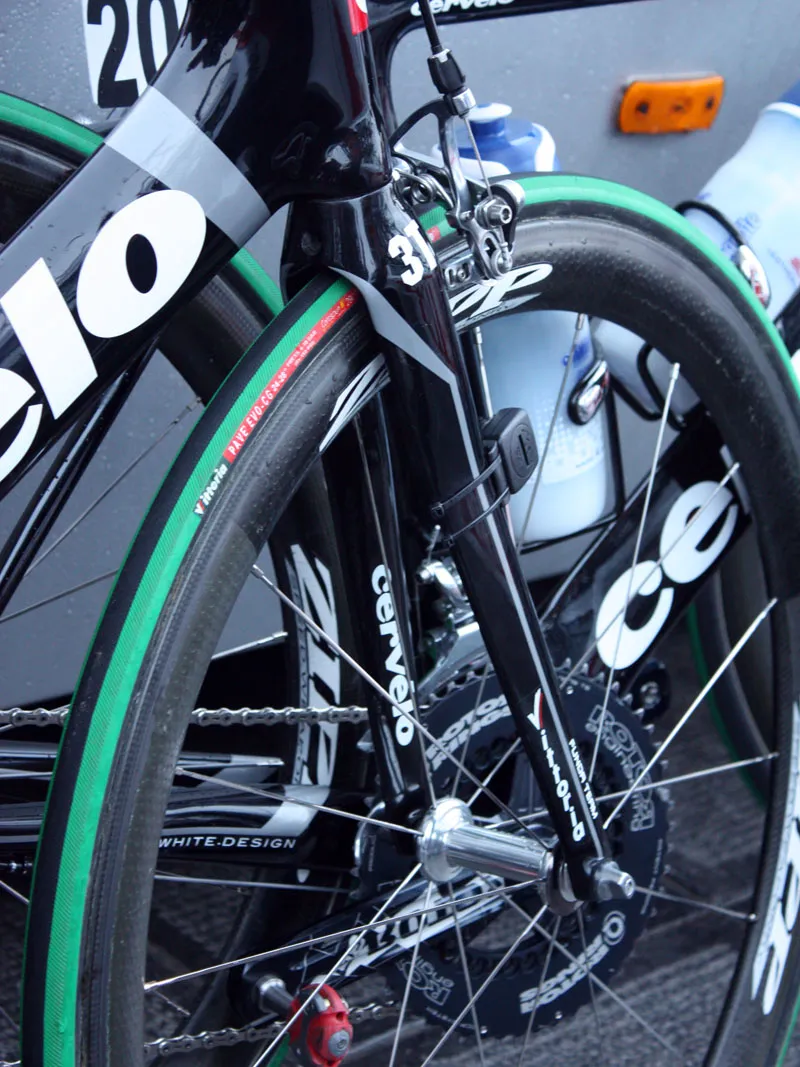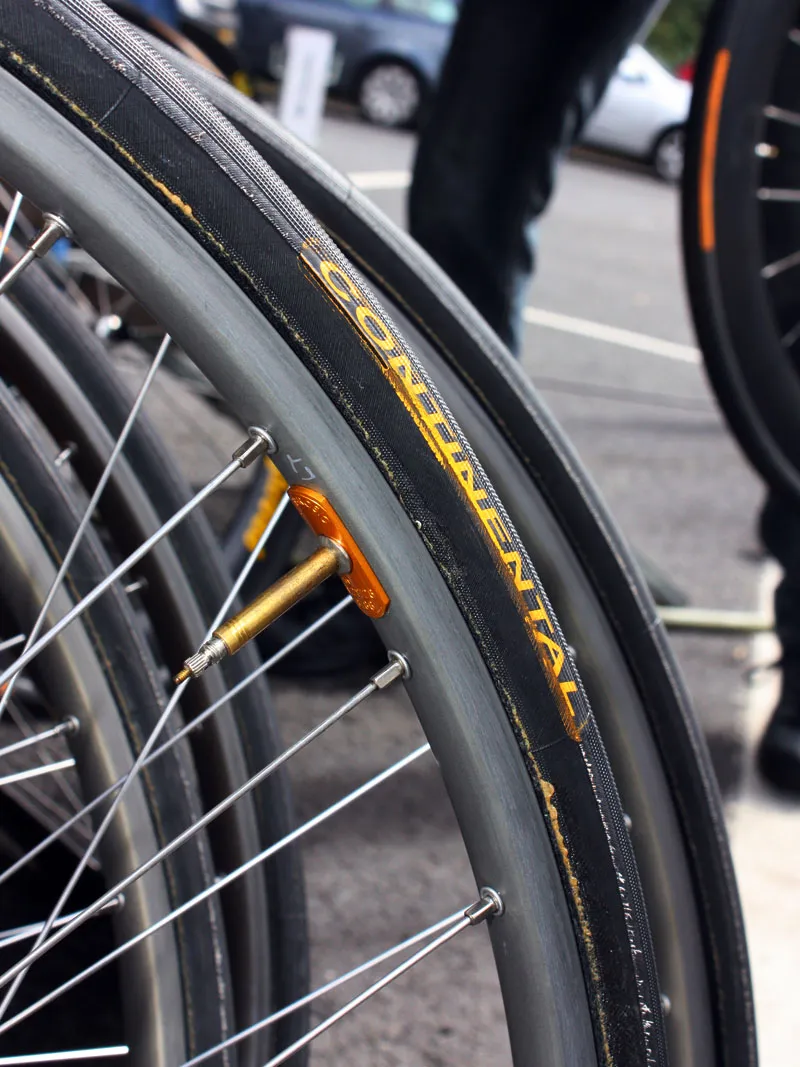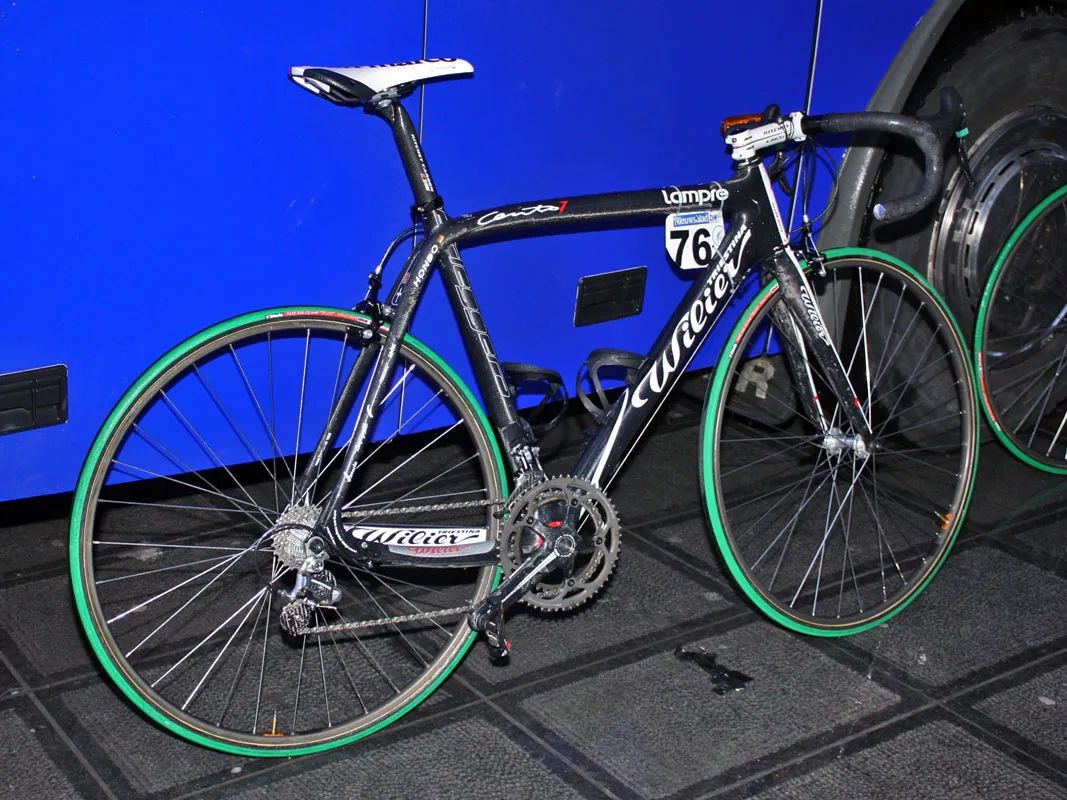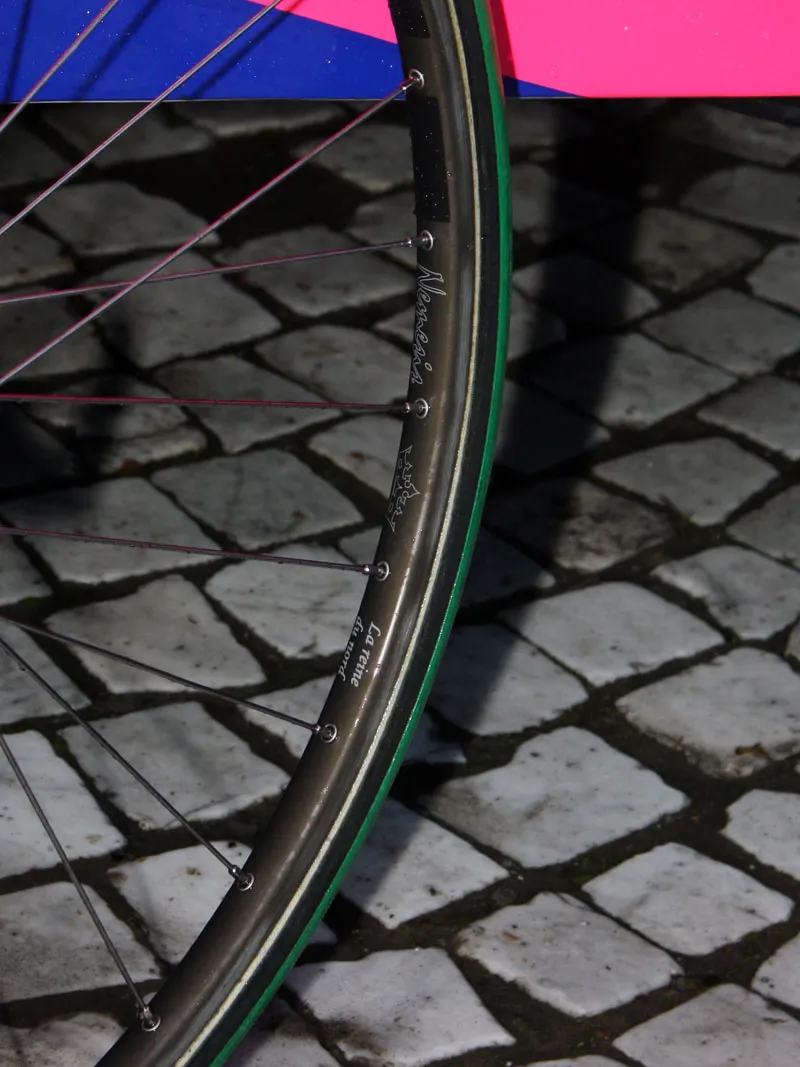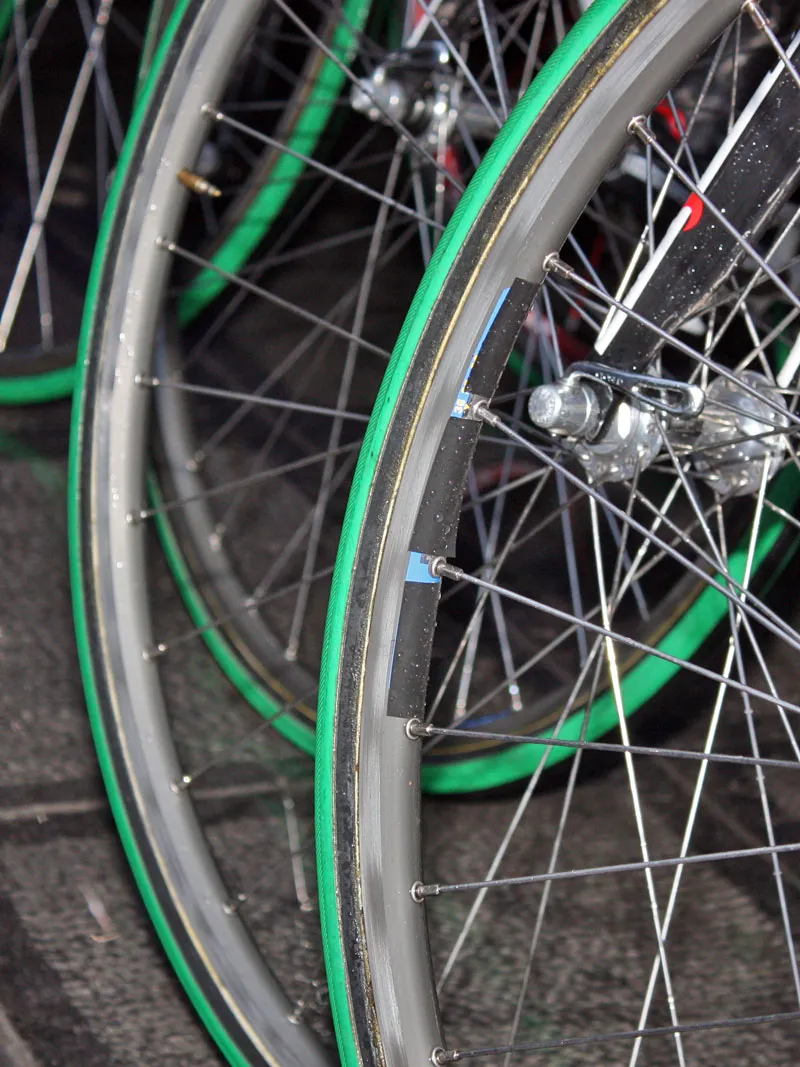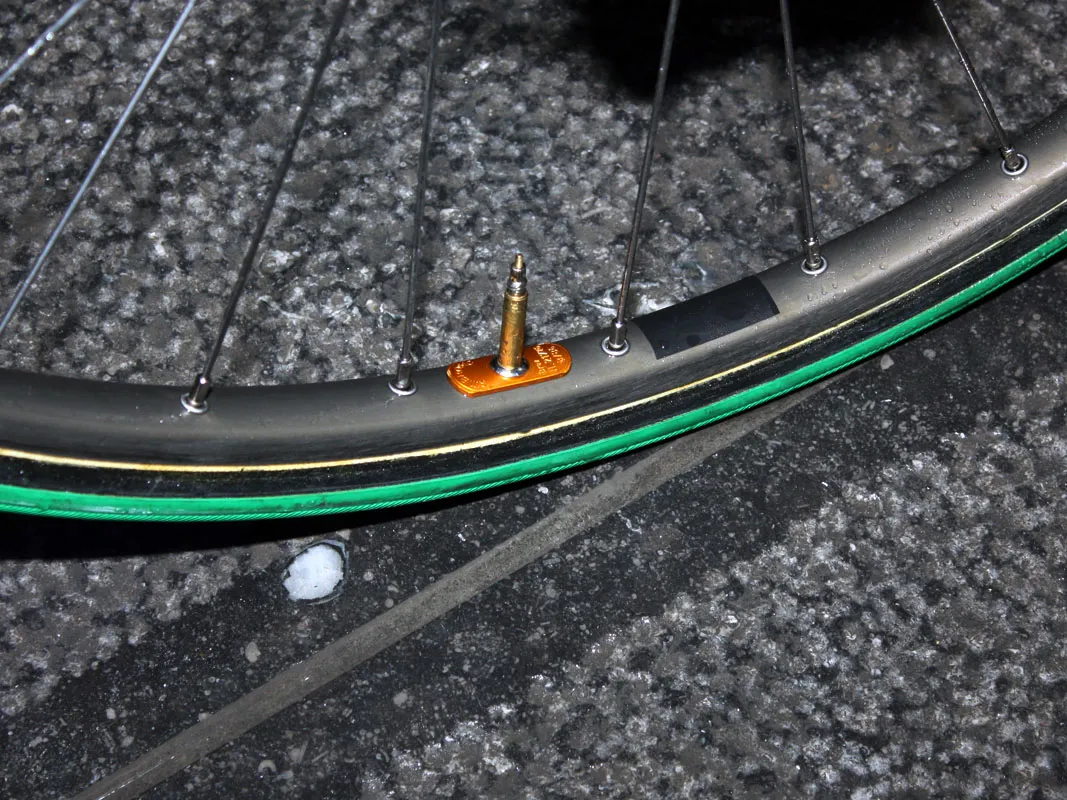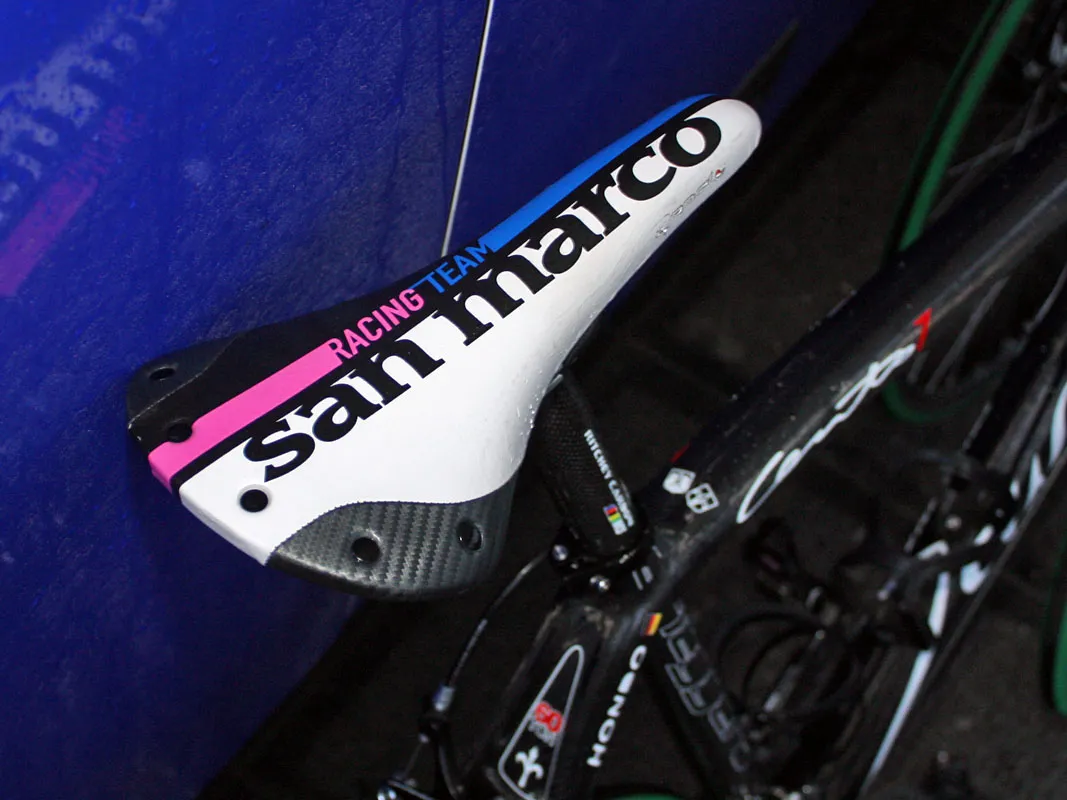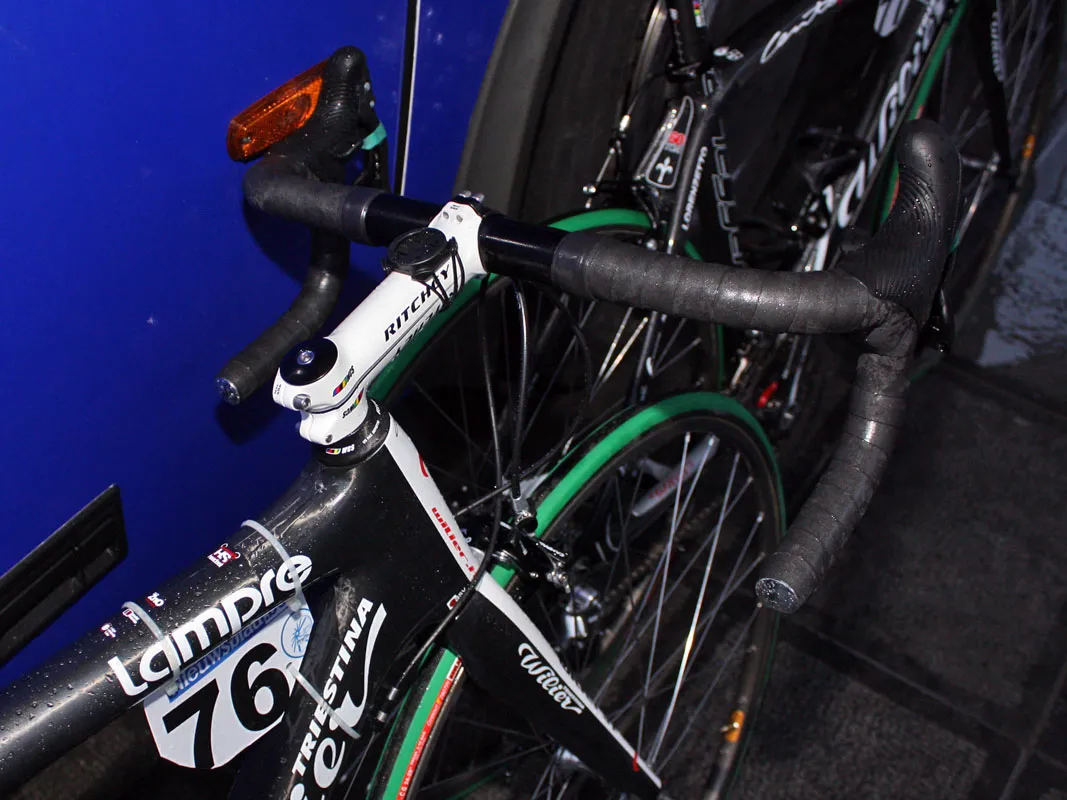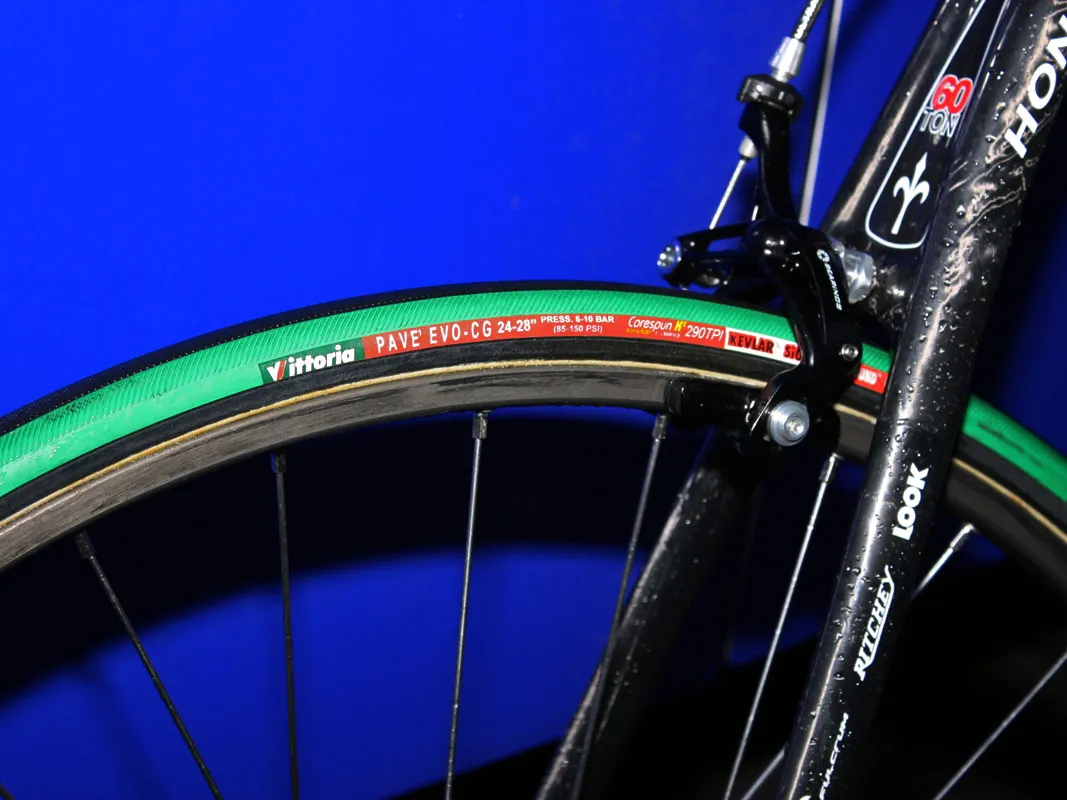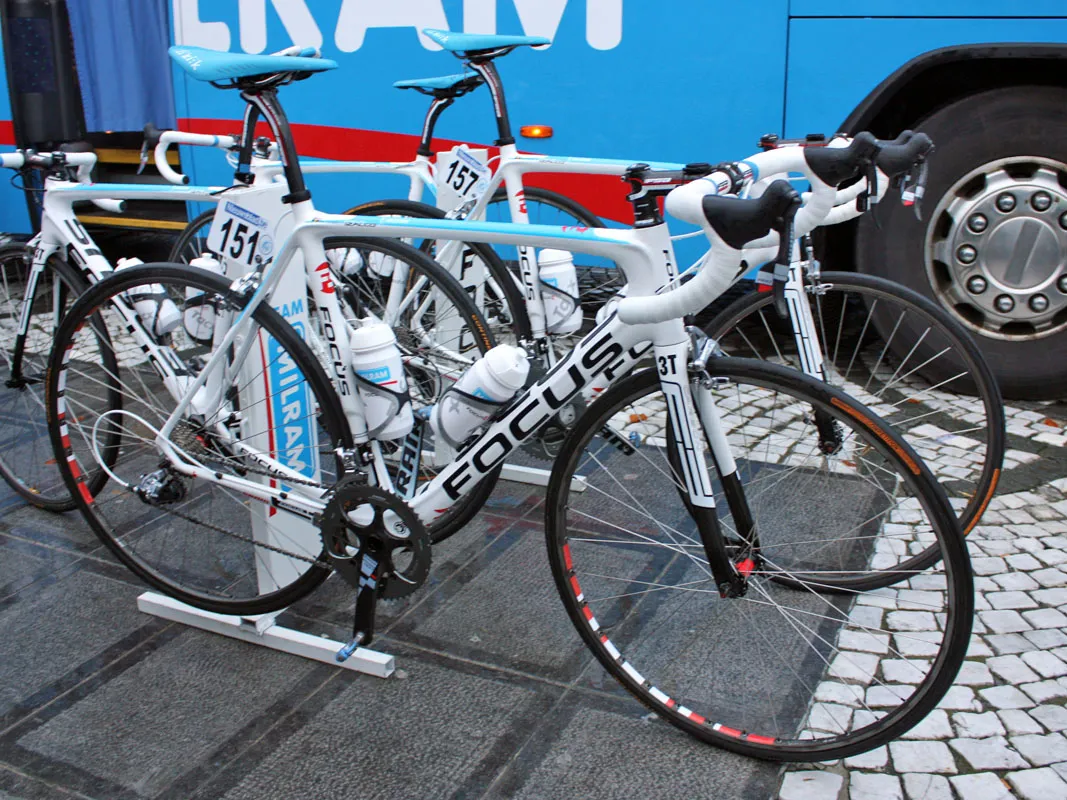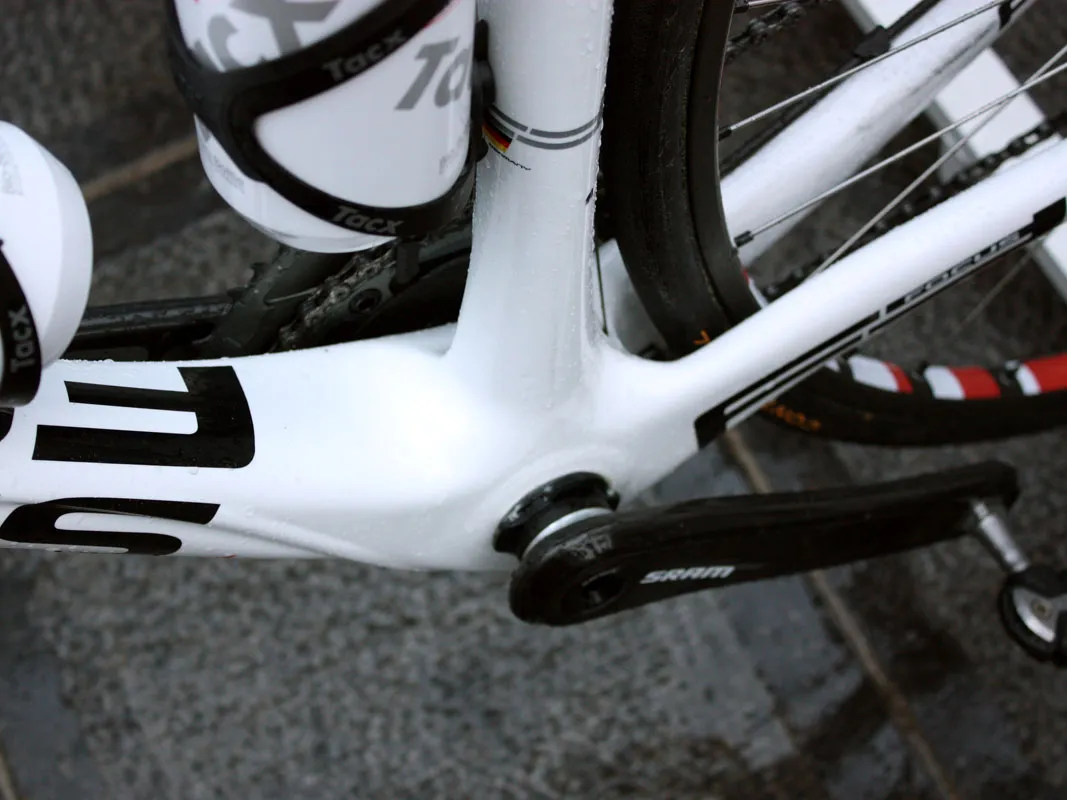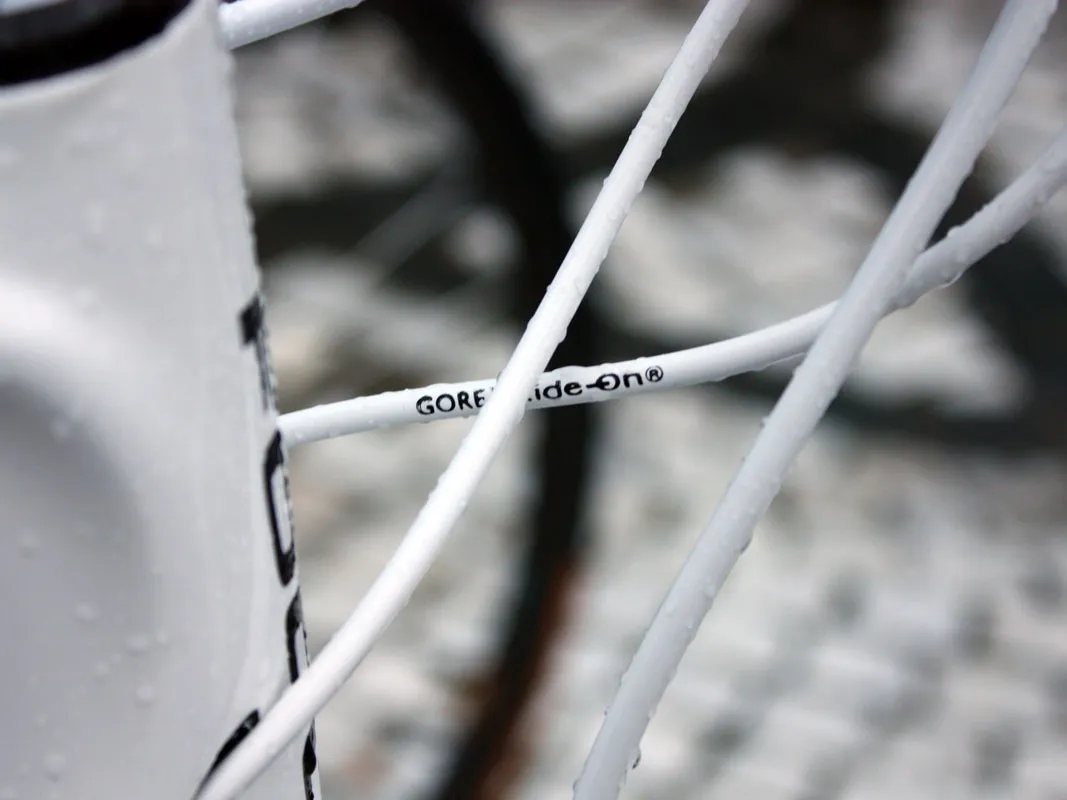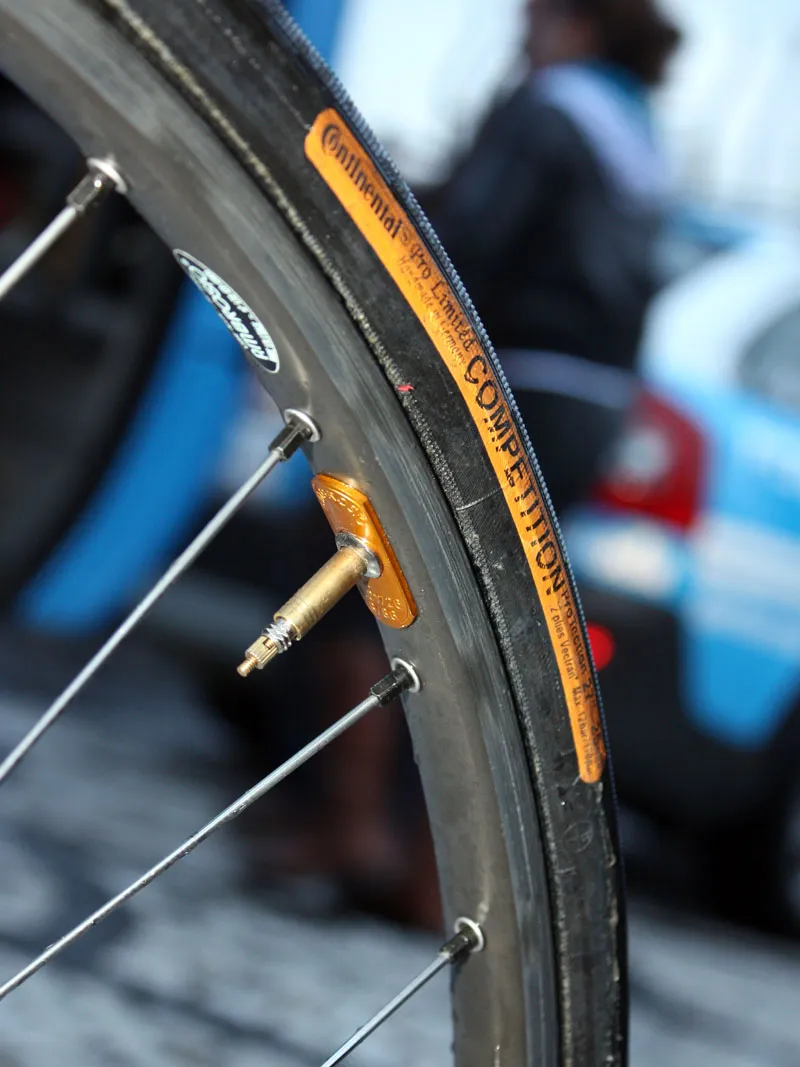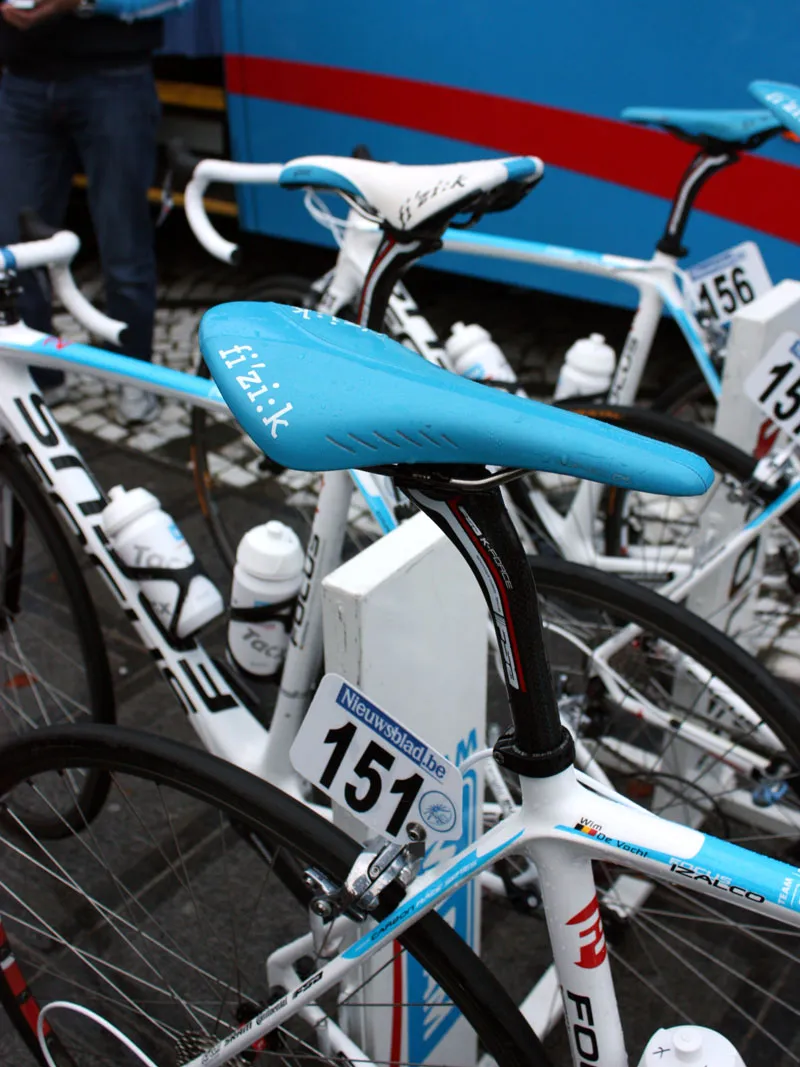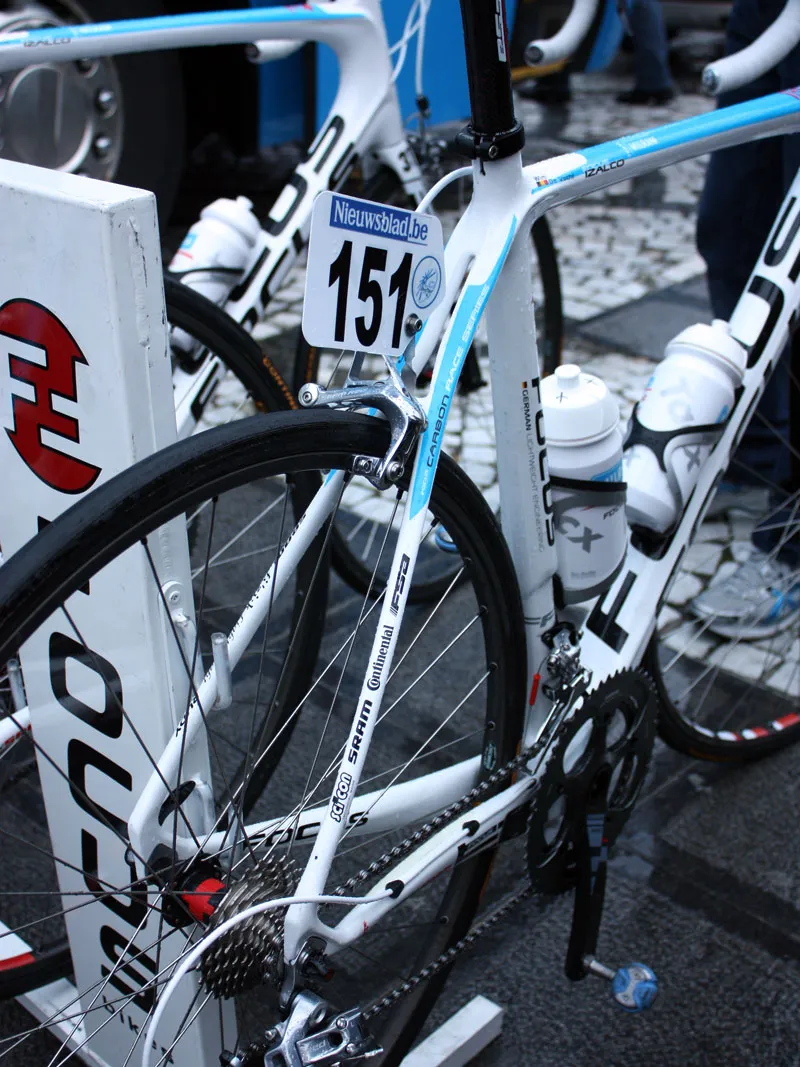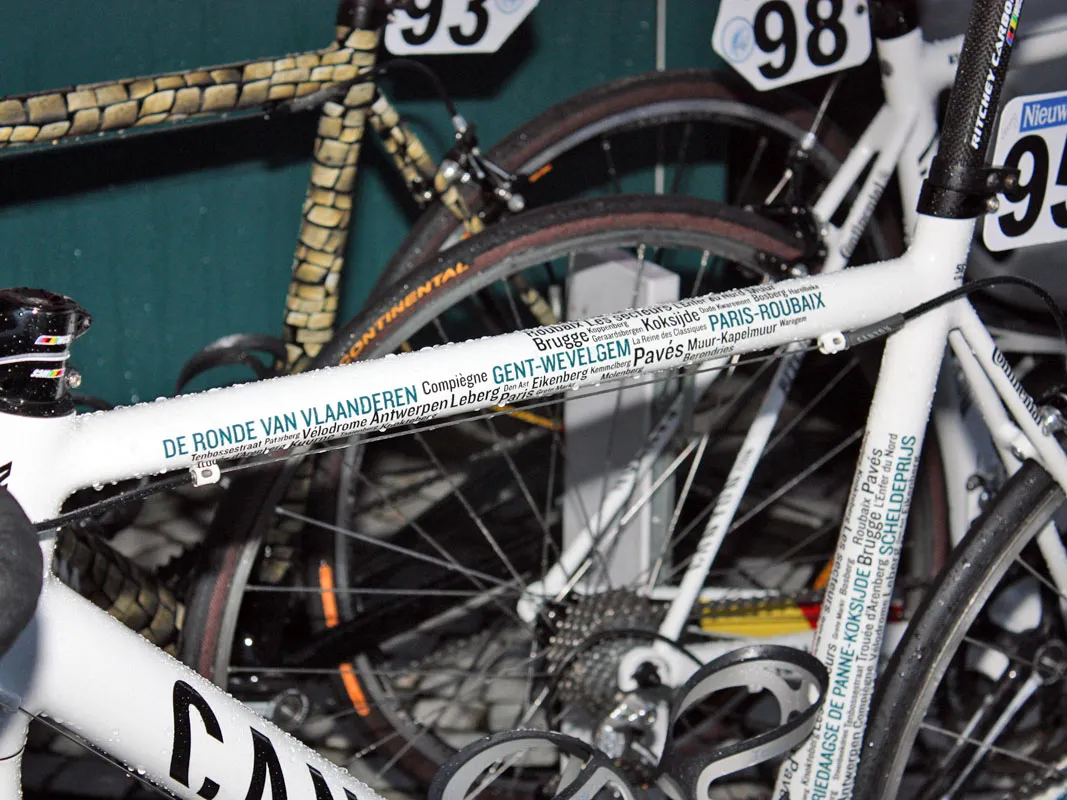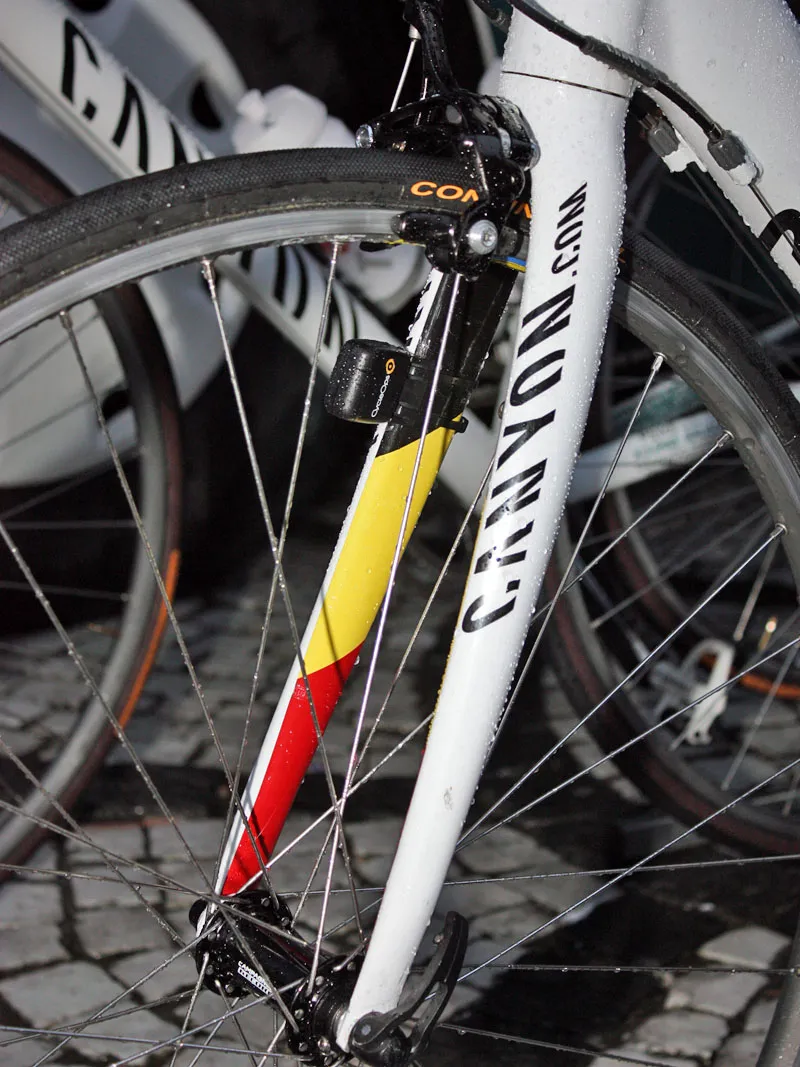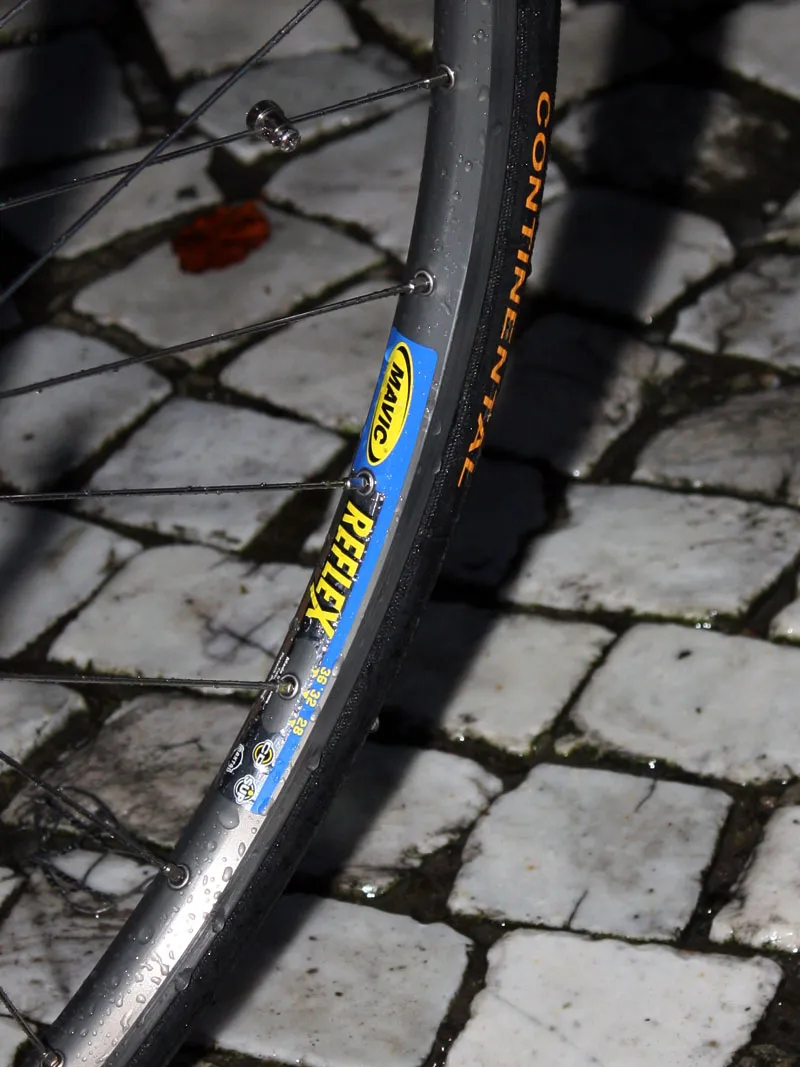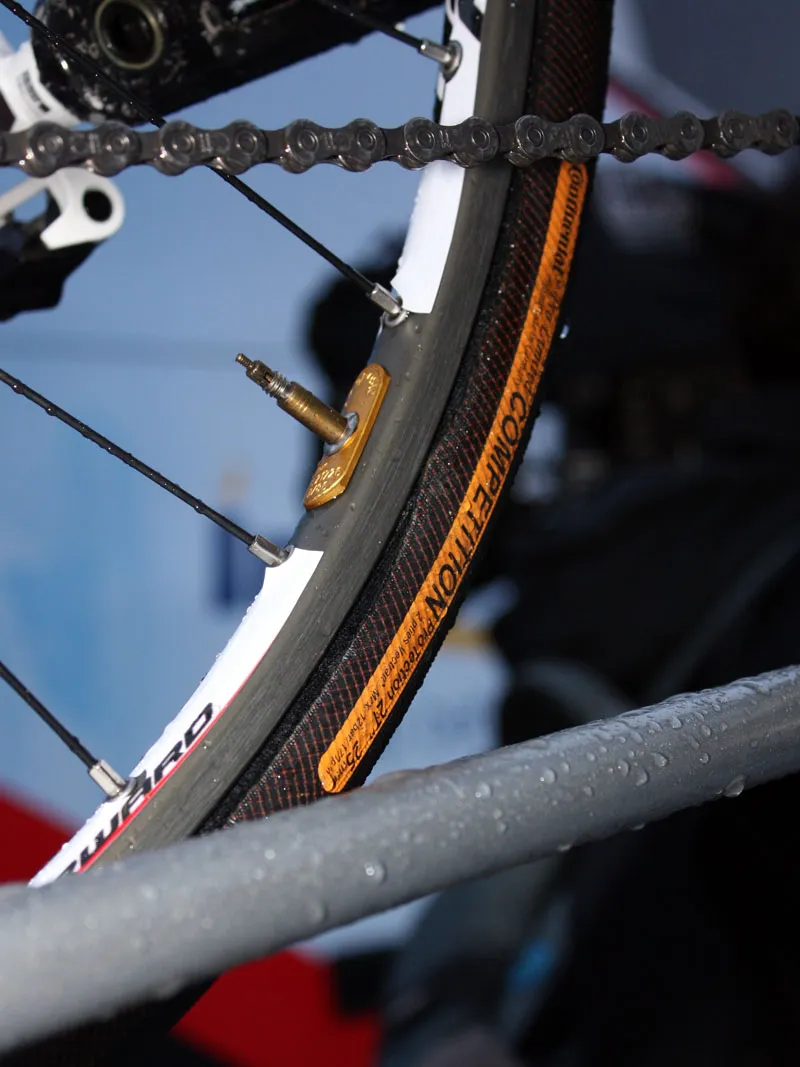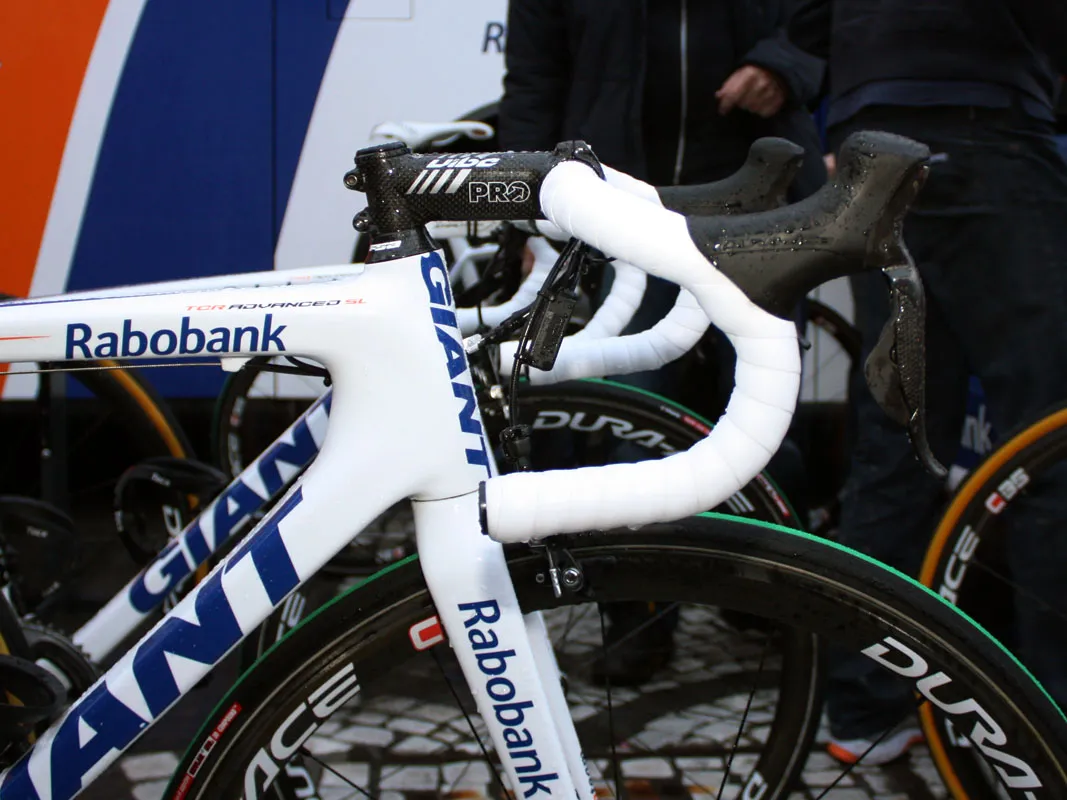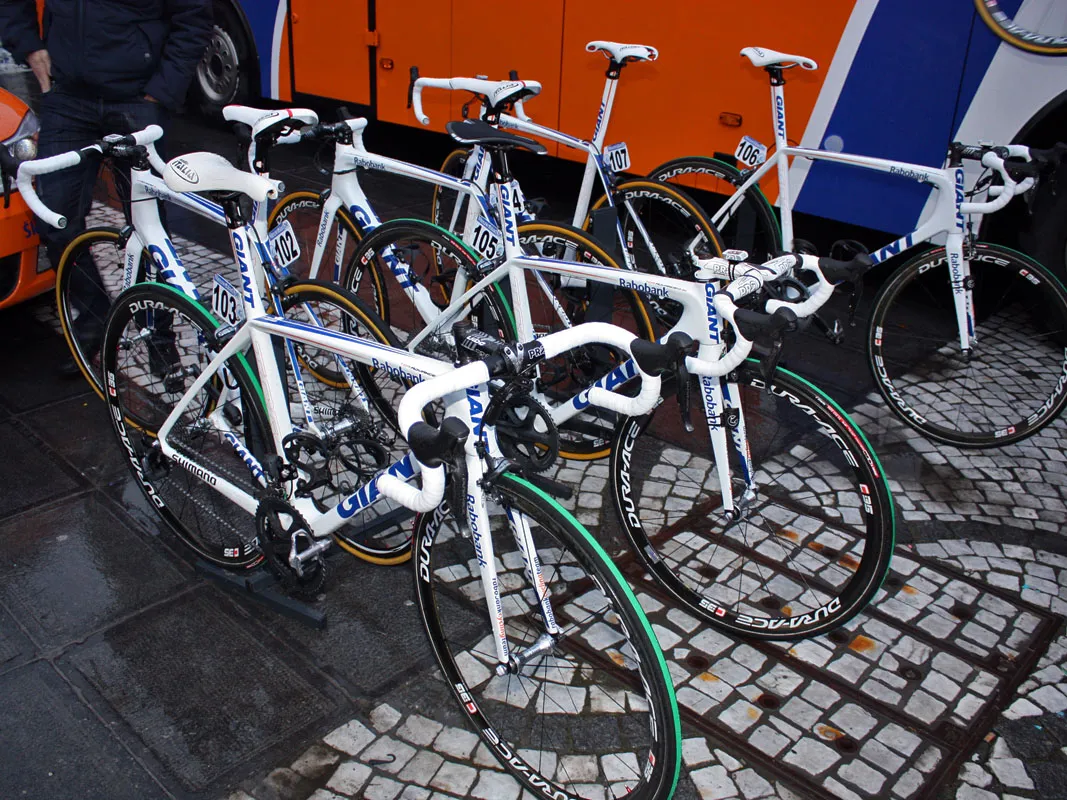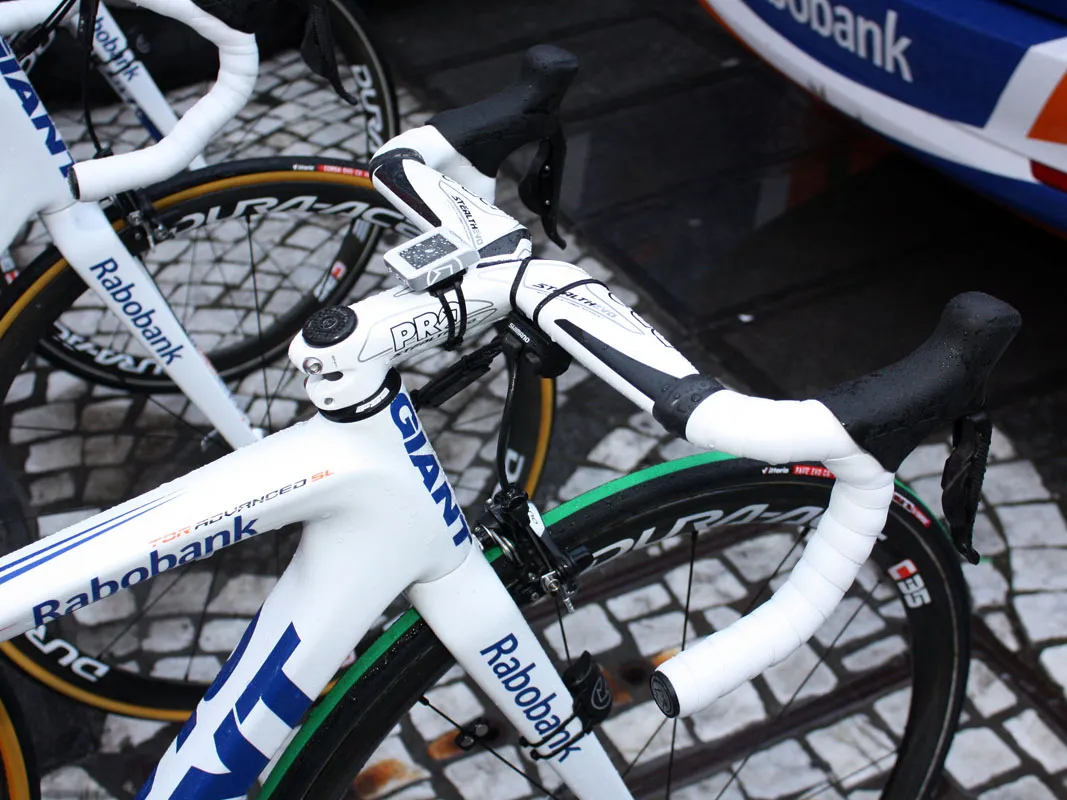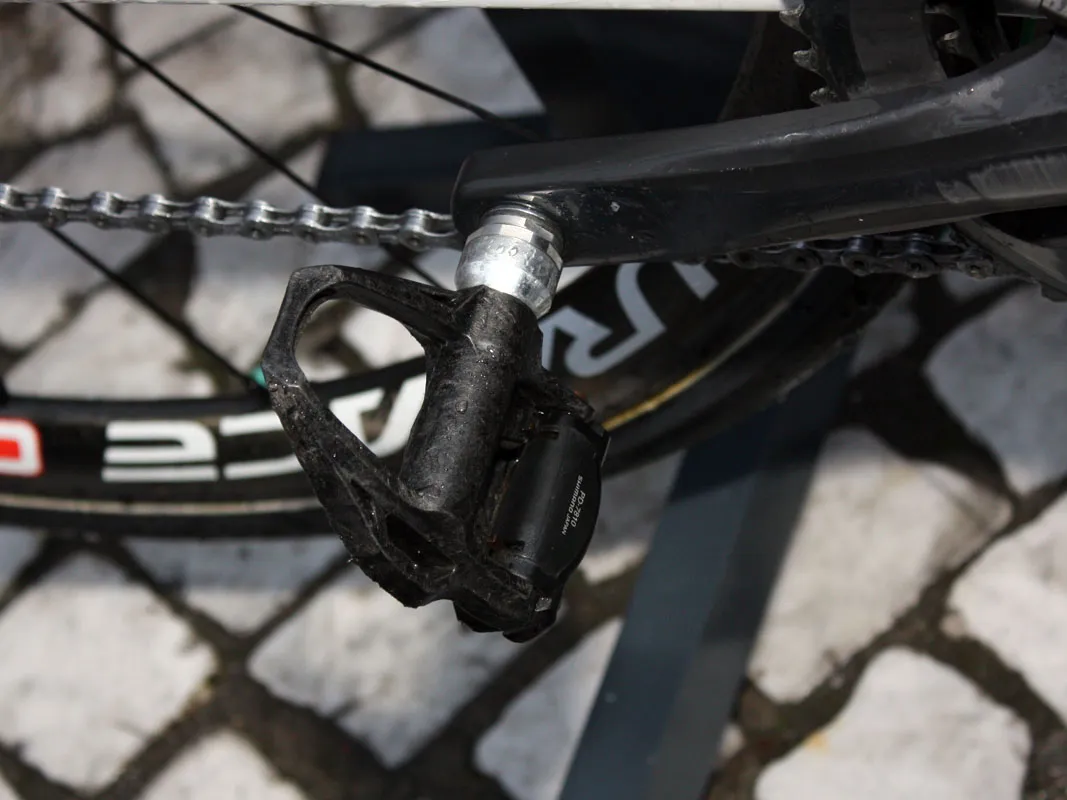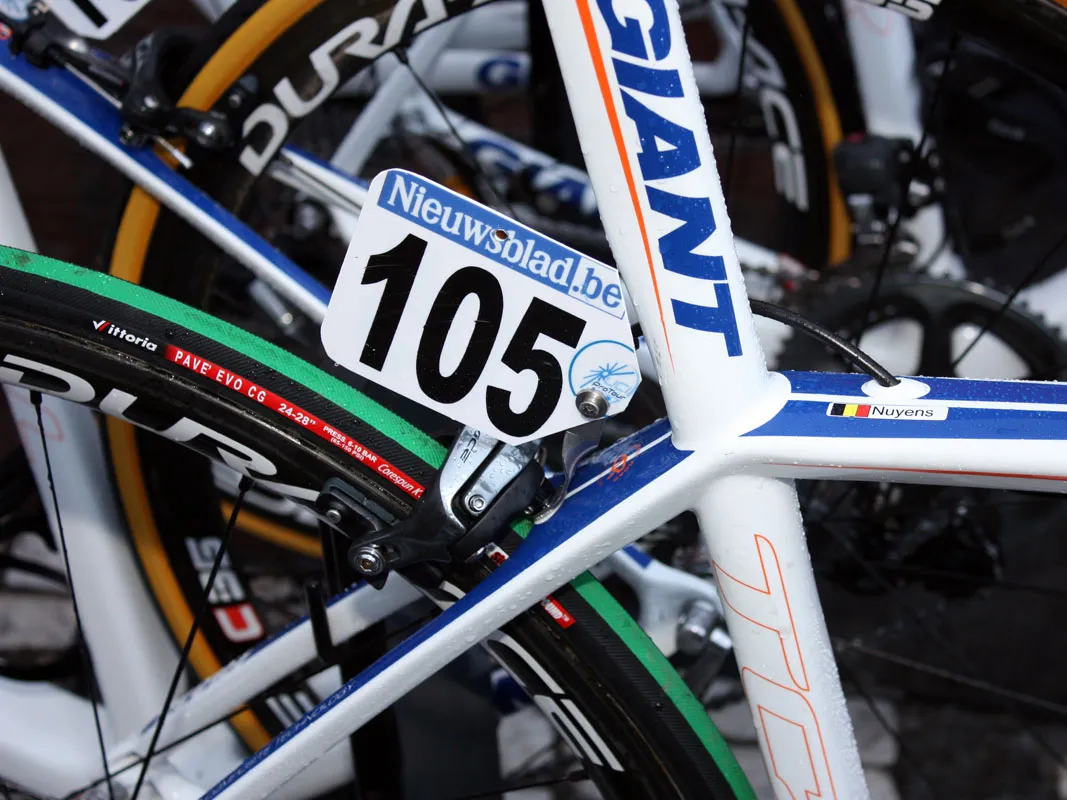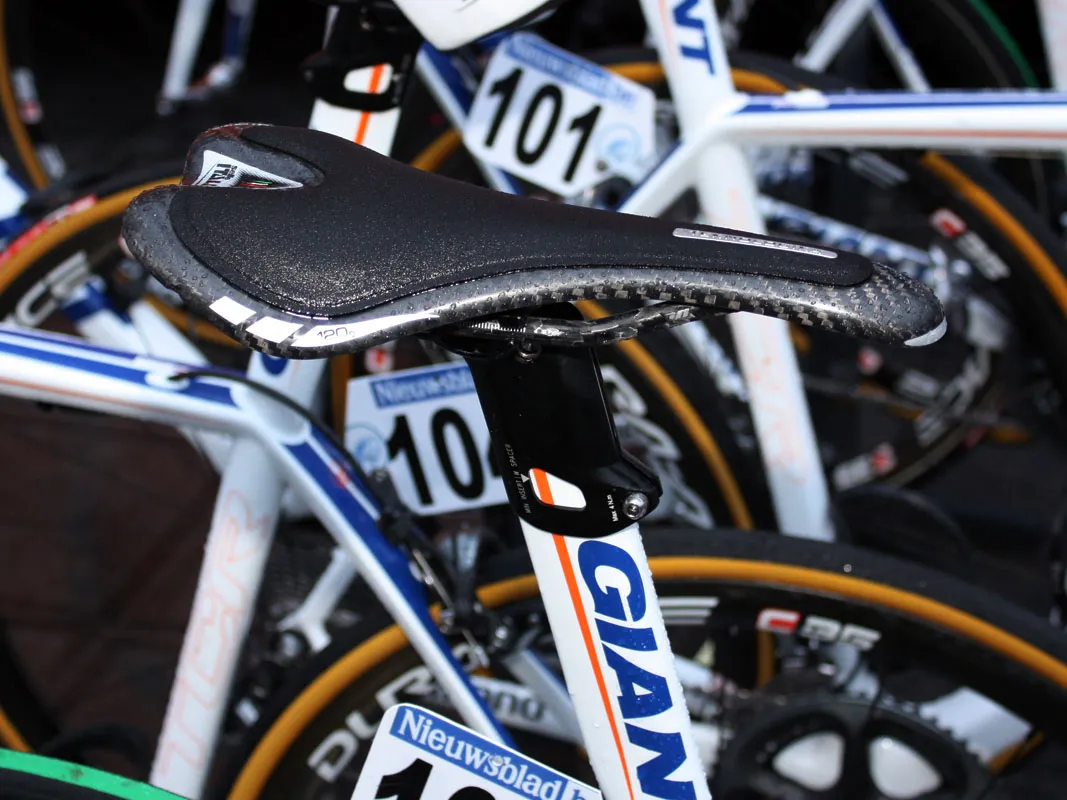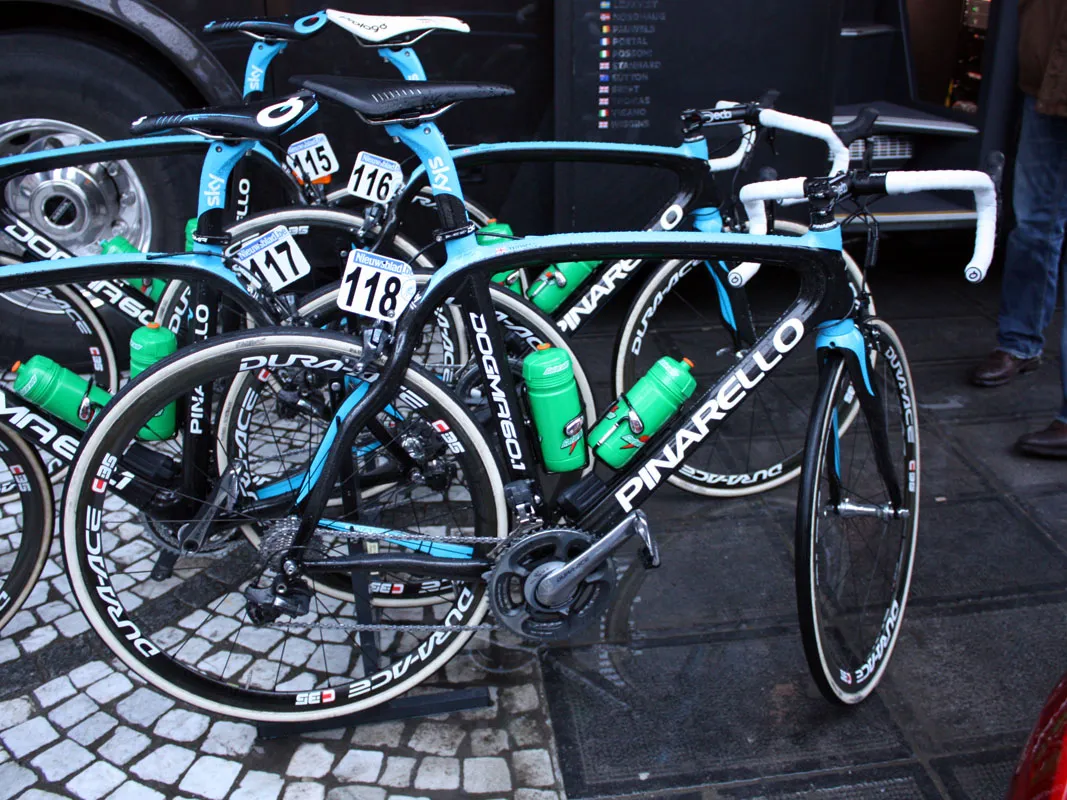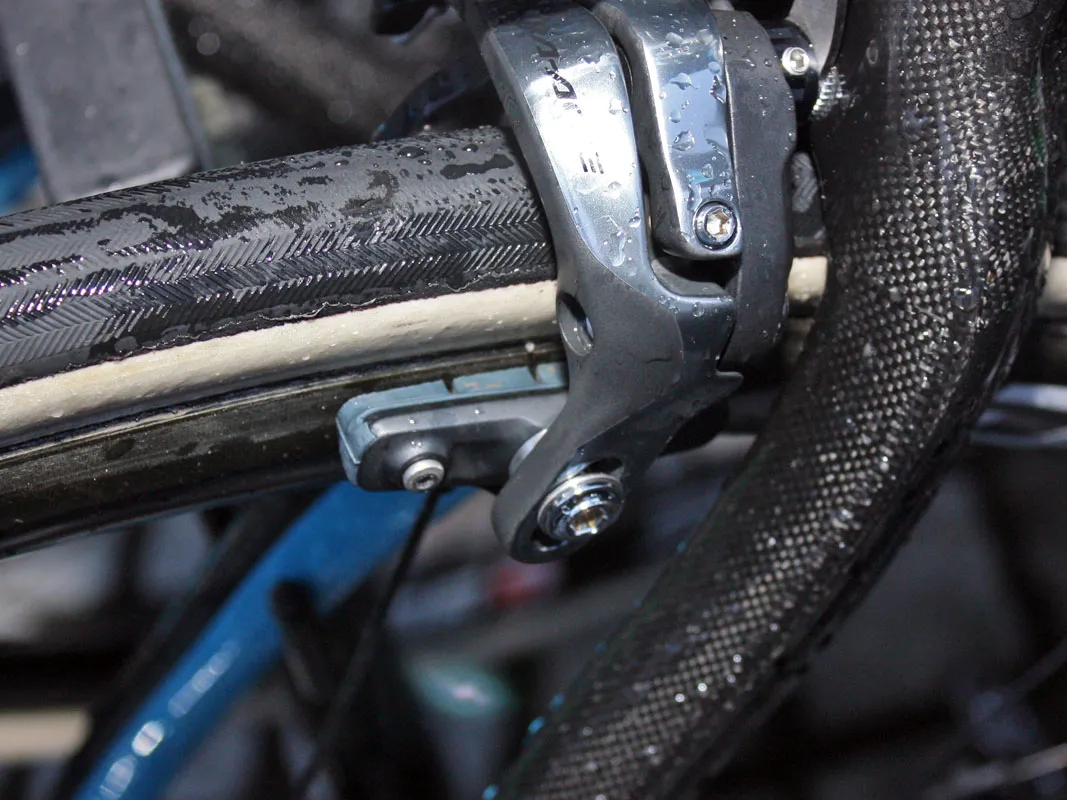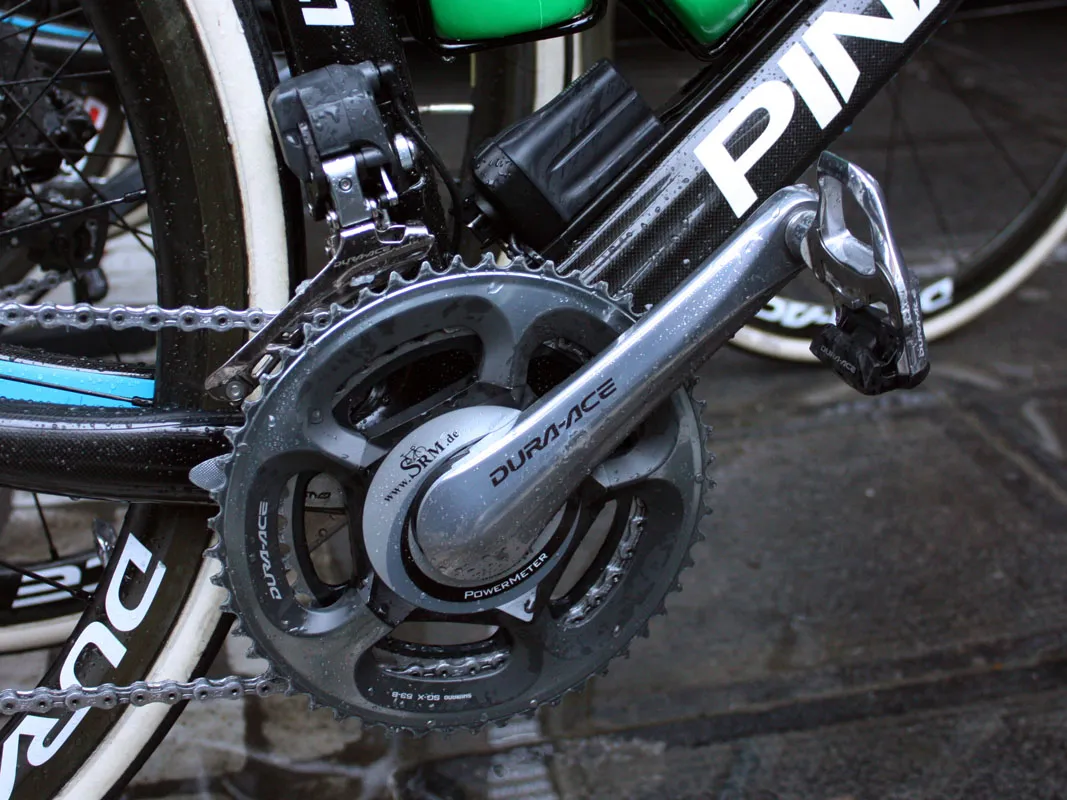No one in their right mind would characterise the Tour of Flanders (Ronde van Vlaanderen) as an easy race but its stretches of cobbles aren't as long or brutal on equipment as those of Paris-Roubaix and the course doesn't get quite as muddy.
As such, most riders' bikes were essentially the same as those they run for standard road events but with some common tweaks and equipment choices, all aimed at the same goals: cushioning and durability over 262.3km of pounding, plus stability and traction on the uneven ground.
Some riders who normally run carbon handlebars made the switch to more damage-tolerant aluminium for their run at De Ronde but unlike at Paris-Roubaix, it was more of an even distribution between the two, with some riders even running integrated one-piece carbon bar and stem combos.
More unusual additions such as top-mounted brake levers were rare, but double-wrapped bar tape was common, with some riders also opting for extra padding underneath.
Tyres measured 24mm or more in width nearly across the board to provide a little extra float on the pave with the lion's share of them being produced by Vittoria, Hutchinson or Continental – Team Sky were one major exception with their boutique FMB treads.
Wet conditions at the start prompted most of the riders to request lower inflation pressures – about 90psi or so – though things quickly dried out so those numbers may have come up as the riders headed to the start line from the team buses.
Not surprisingly, hand-built wheels with box-section aluminium tubular rims (mostly from Ambrosio) were the most common configuration out there but carbon was still very popular, with the entire Rabobank, Saxo Bank and Cervelo TestTeam squads running composite rims exclusively.
Other high-profile riders such as Lance Armstrong (Team Radioshack) and George Hincapie (BMC) opted for them as well. And yes, one rider from Omega Pharma-Lotto was using Mavic's R-SYS Premium.
With but a few exceptions, the bulk of riders were on their usual road framesets. Saxo Bank's Specialized S-Works Tarmac SL3s appeared to be fully standard issue as did Cervelo TestTeam's S3 aero machines. Omega Pharma-Lotto's fleet comprised a mix of carbon and alloy chassis and we saw but one proper 'cross bike in the mix under one of the BBox Bouygues Telecom riders.
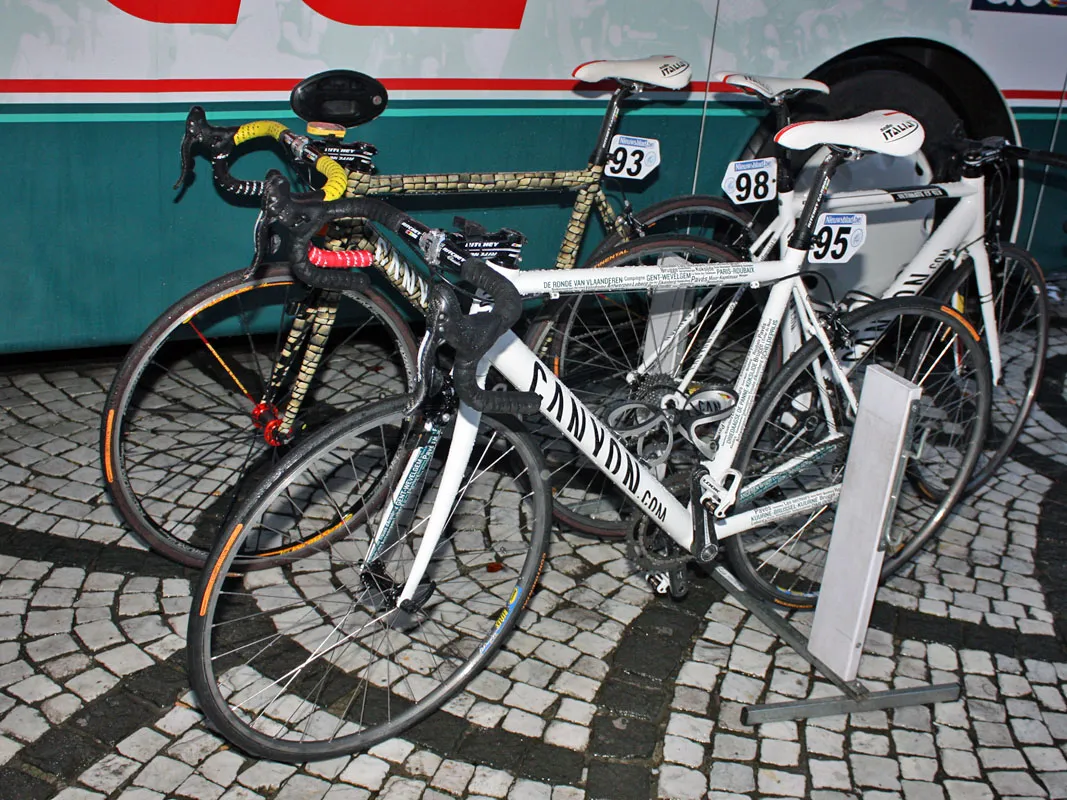
Omega Pharma-Lotto bikes comprised a mix of carbon and aluminium plus one specially painted rig for team leader Philippe Gilbert
A bit more variation was found in forks, though, with Team Radioshack running slightly longer crown-to-axle heights on their Madone forks (presumably with tips spliced in from another fork model) and some HTC-Columbia guys trading in their Scott Addict forks for ones from the company's softer-riding CR1 model.
Take a good look at these machines from Ronde van Vlaanderen now as things often change dramatically for this coming weekend's Paris-Roubaix. But then again, the weather forecast is calling for relatively warm and dry conditions all week so we'll have to wait and see what actually shows up on the start line.
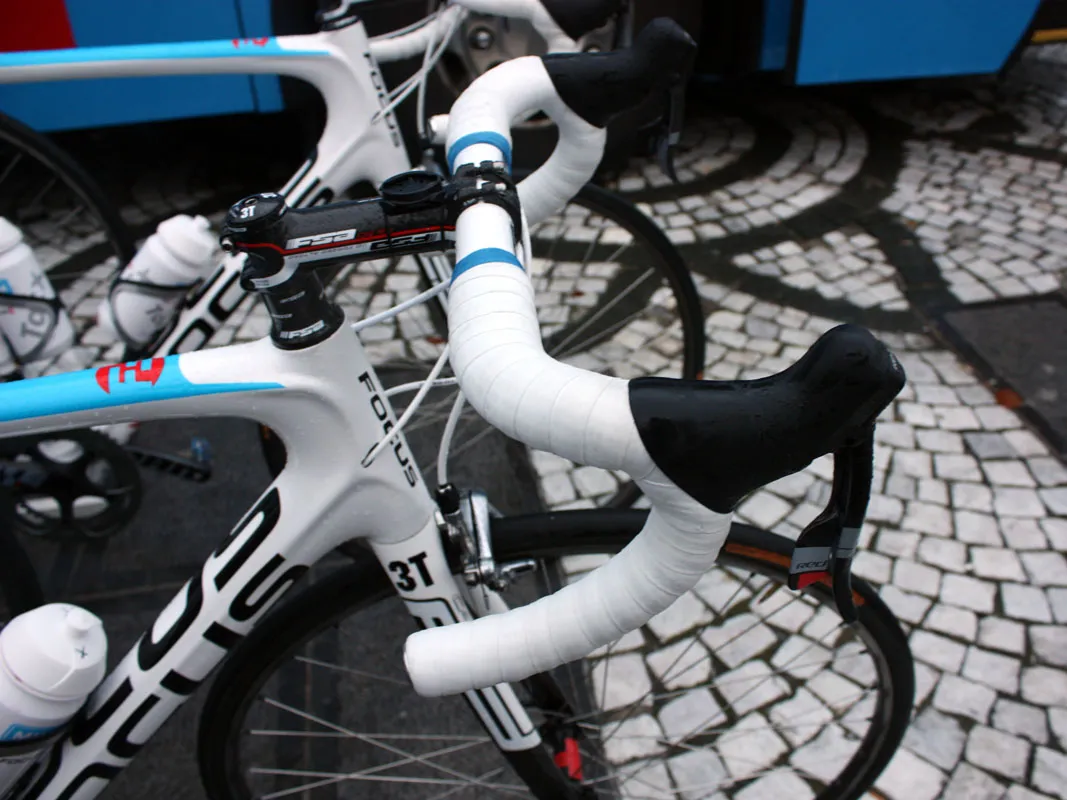
Double-wrapped and heavily padded bars were a common sight at Ronde van Vlaanderen


